Post by NW Noggin participants Mikah Brandes, Camden Howard, Maria Galvan-Bravo, Aaron Eisen, Sai Kiersarsky, undergraduates (and one recent graduate) of Portland State University.

“We cannot seek achievement for ourselves and forget about progress and prosperity for our community…Our ambitions must be broad enough to include the aspirations and needs of others, for their sakes and for our own.”
— Cesar Chavez
We’re routinely blown away by the expertise, creativity, enthusiasm and talent of our outreach volunteers! Not only did they organize another free NogginFest, an accessible public celebration of brain research, music and art which helped propel them to two conferences (the Society for Social Neuroscience and the Society for Neuroscience) in Chicago this fall…
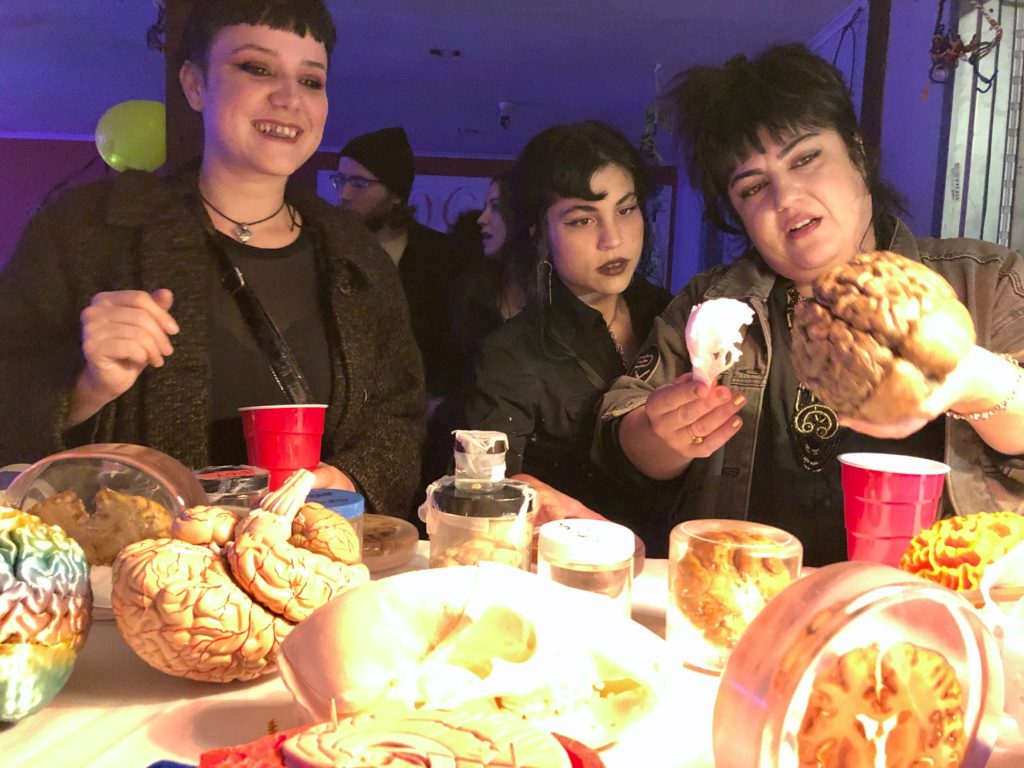
LEARN MORE: NOGGIN FEST 2019!!!
But they also met with ~500 K-12 students at the Chicago Museum of Science and Industry, crafted more pipe cleaner neurons and exhibited real (extra!) brains at the Museum of Surgical Science, and brought art making and brains to the SfN conference itself. In fact, this was the first time in the 50 year history of SfN that any actual brain specimens appeared!
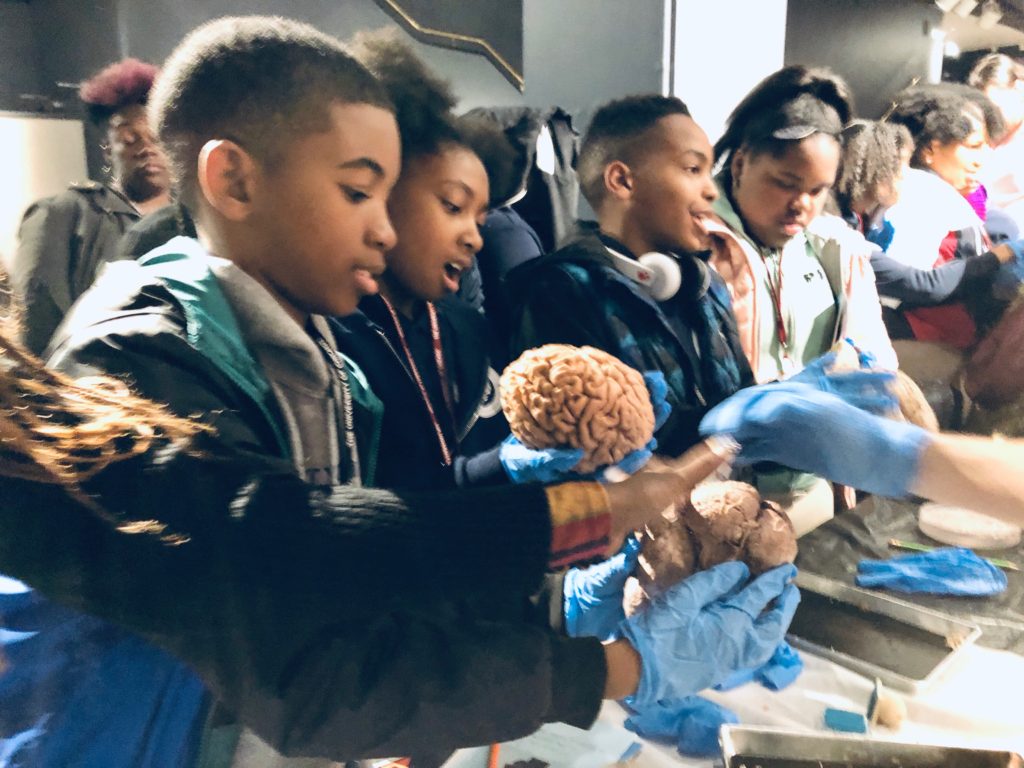
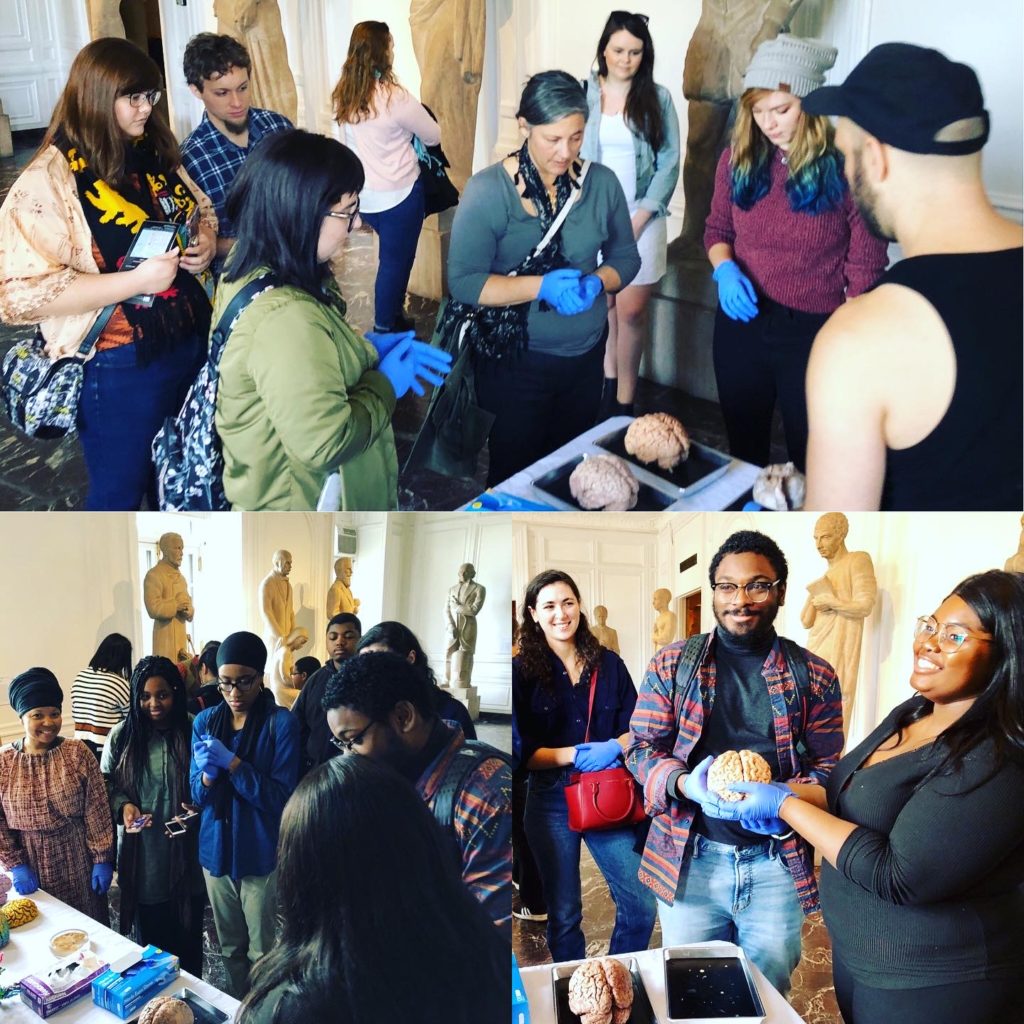
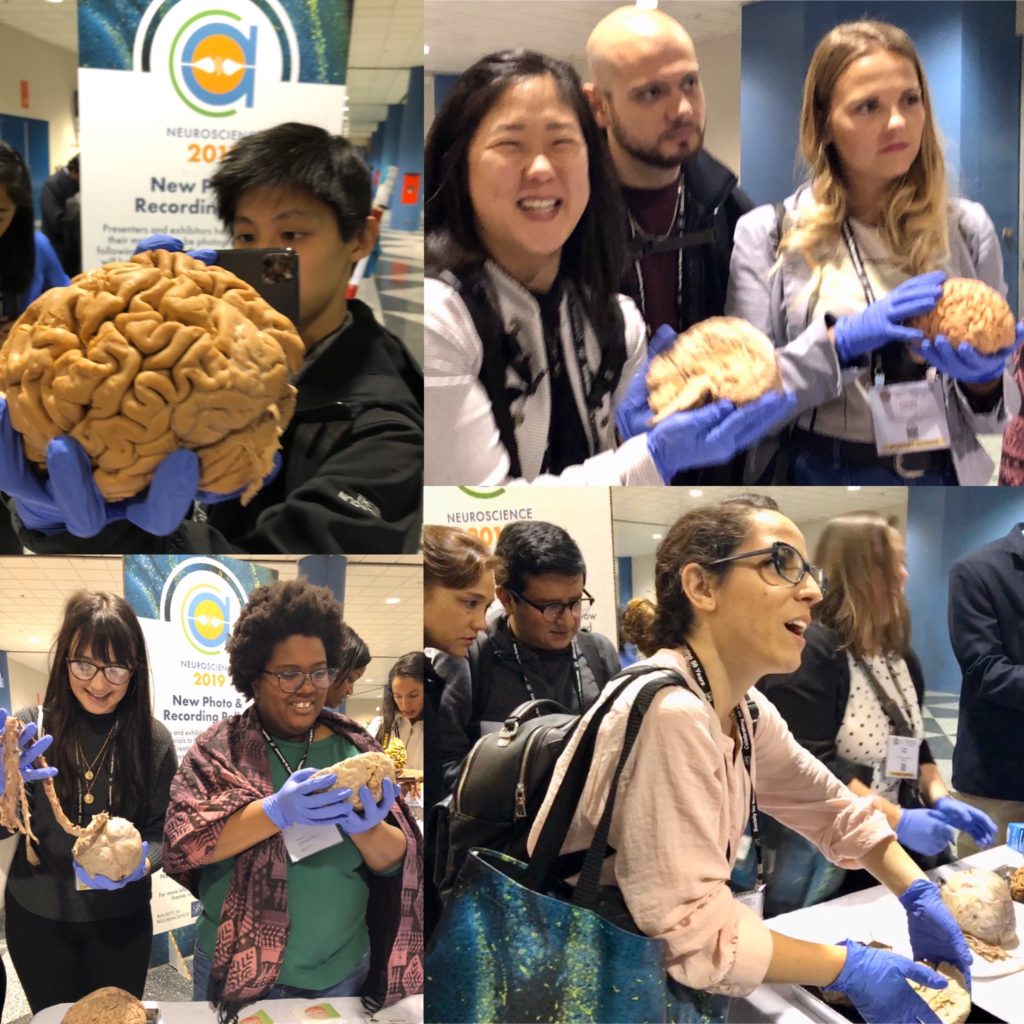
LEARN MORE: Noggins in CHICAGO!
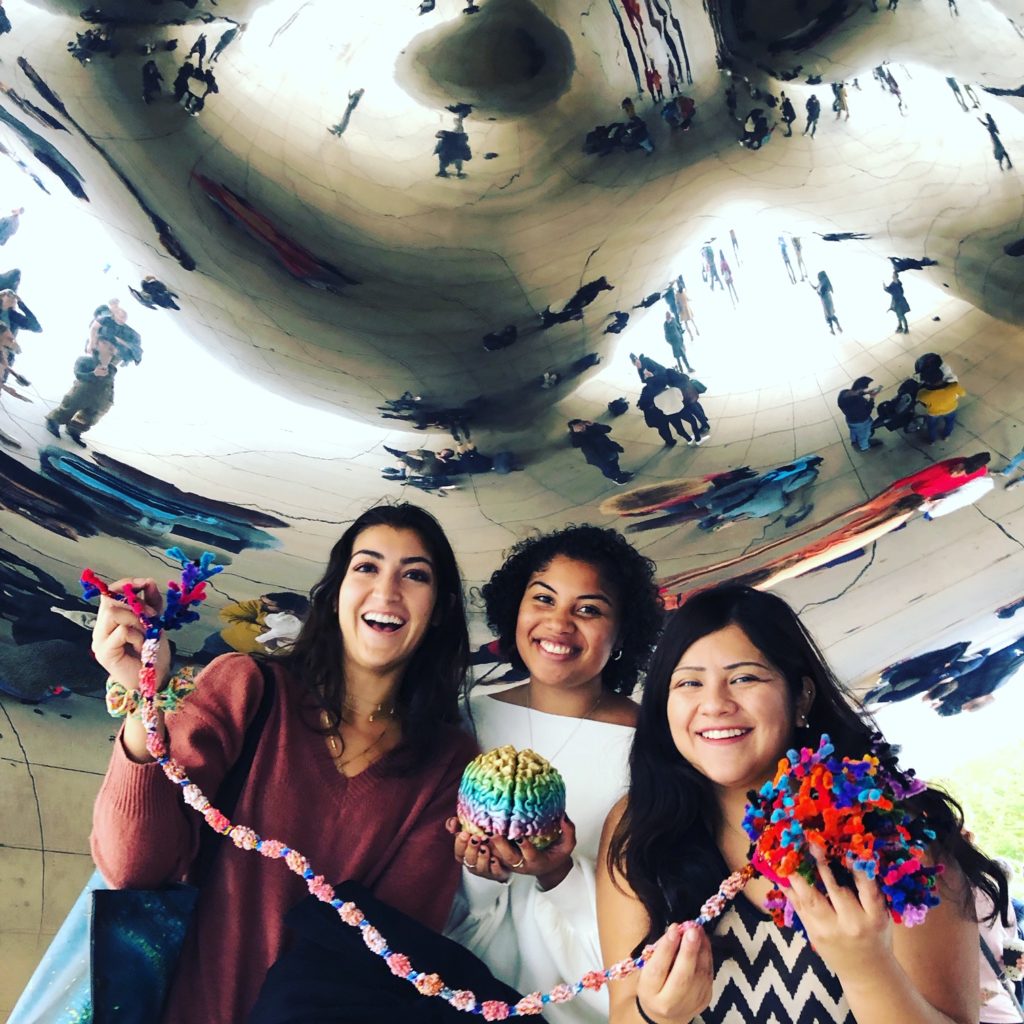
Jump ahead!
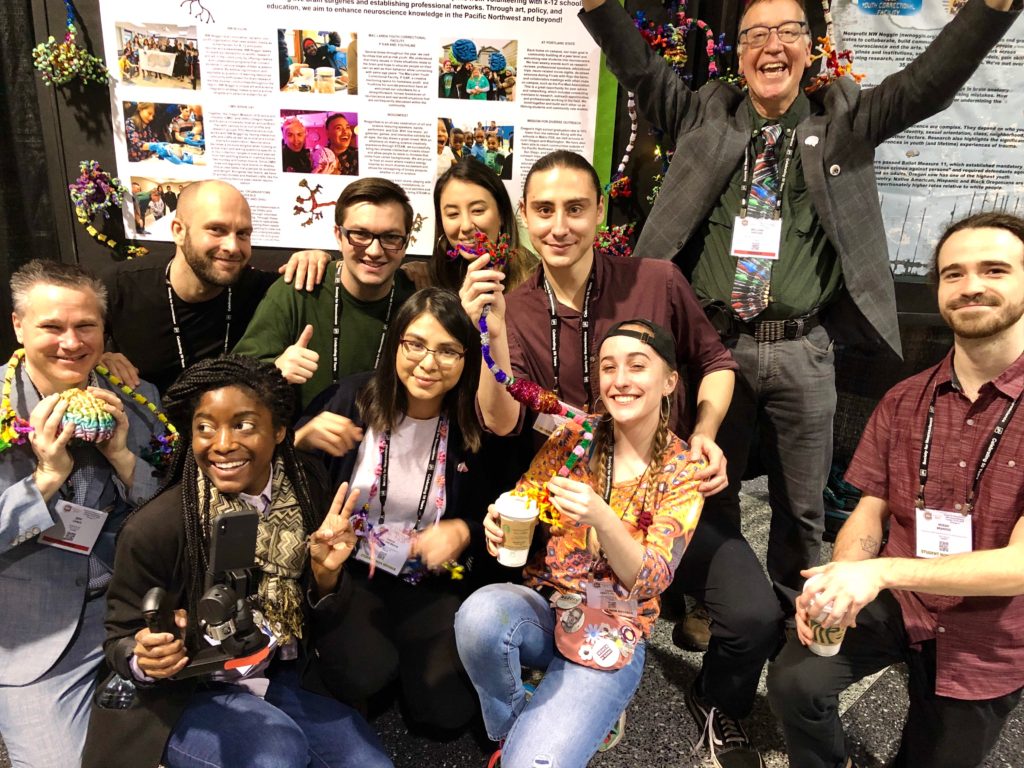
Mikah Brandes, PSU/BUILD EXITO
Traveling to Chicago with NW Noggin and fellow PSU Neuroscience Club members was something I never imagined I would do. It was an honor to participate in amazing outreach events, connect with so many children and adolescents, and share my own developing knowledge of the brain. The reactions people had to the activities and real brains gave me a feeling I never had before and I feel very fortunate to be a part of something so spectacular.
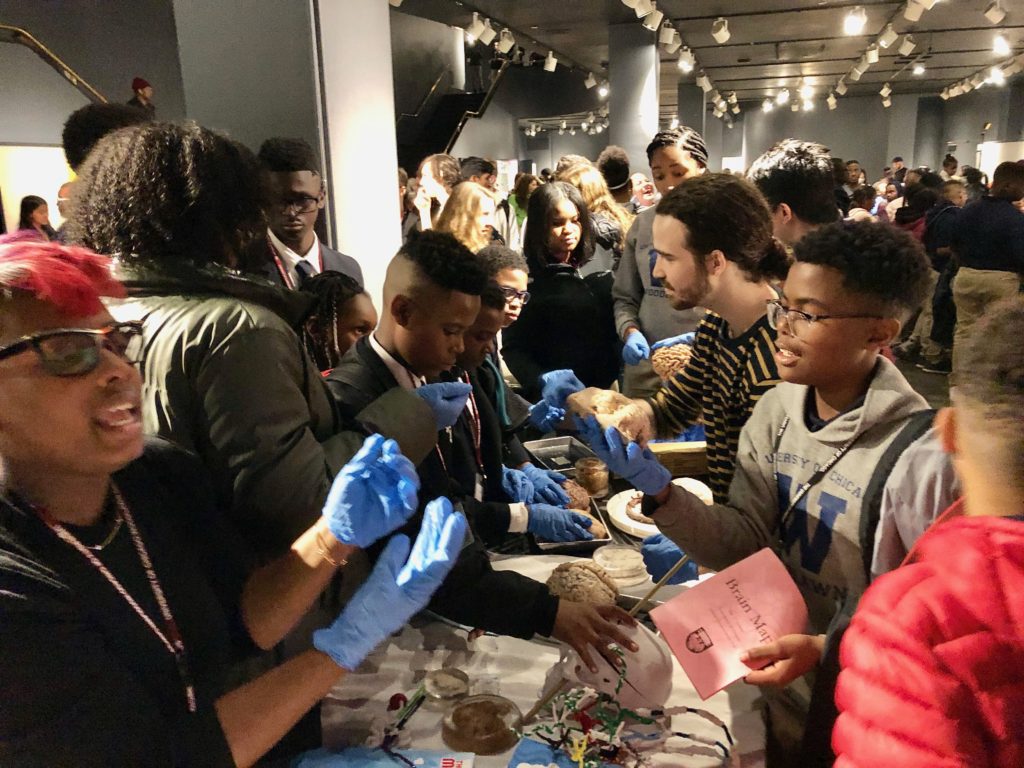
With funding support from the Portland Alcohol Research Center, I was able to travel (and eat!) during my trip to Chicago and I learned so much more than I expected.
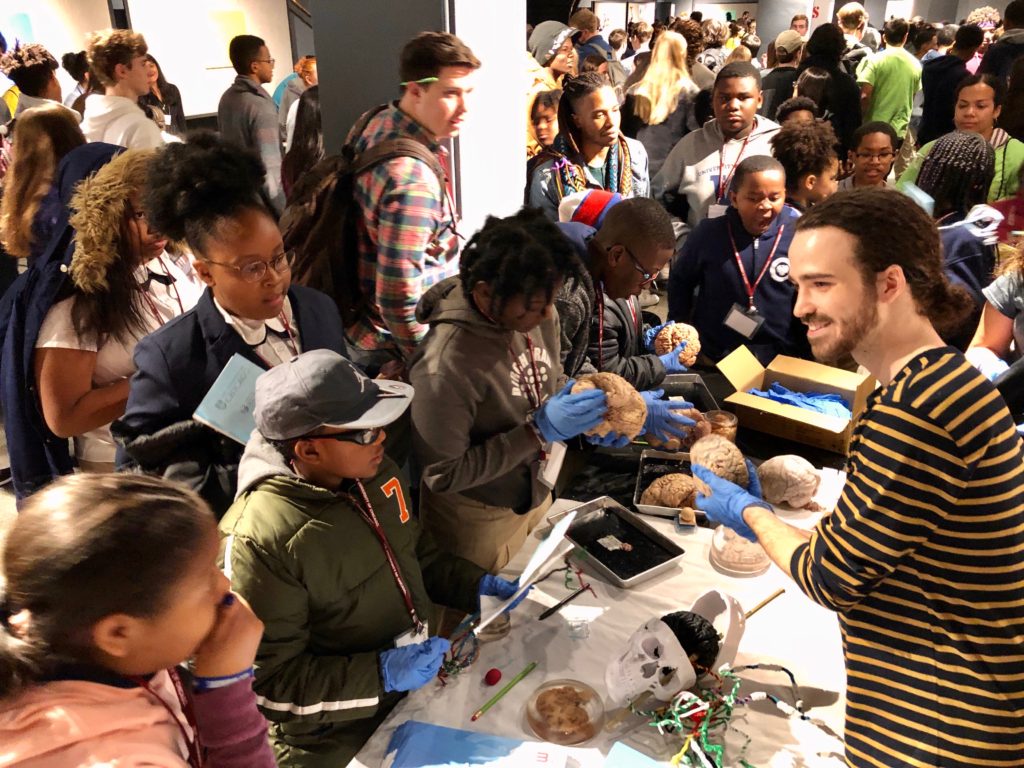
The Society for Social Neuroscience Fair at the Museum of Science and Industry was an outstanding experience, where I saw my first human brain with the spinal cord still attached (thanks Yuri Sugano from the University of Chicago!), talked with hundreds of students about brain structure, function and neuroscience research, and learned from former U.S. Surgeon General Dr. Vivek Murthy that loneliness has a tremendous impact on one’s well-being.
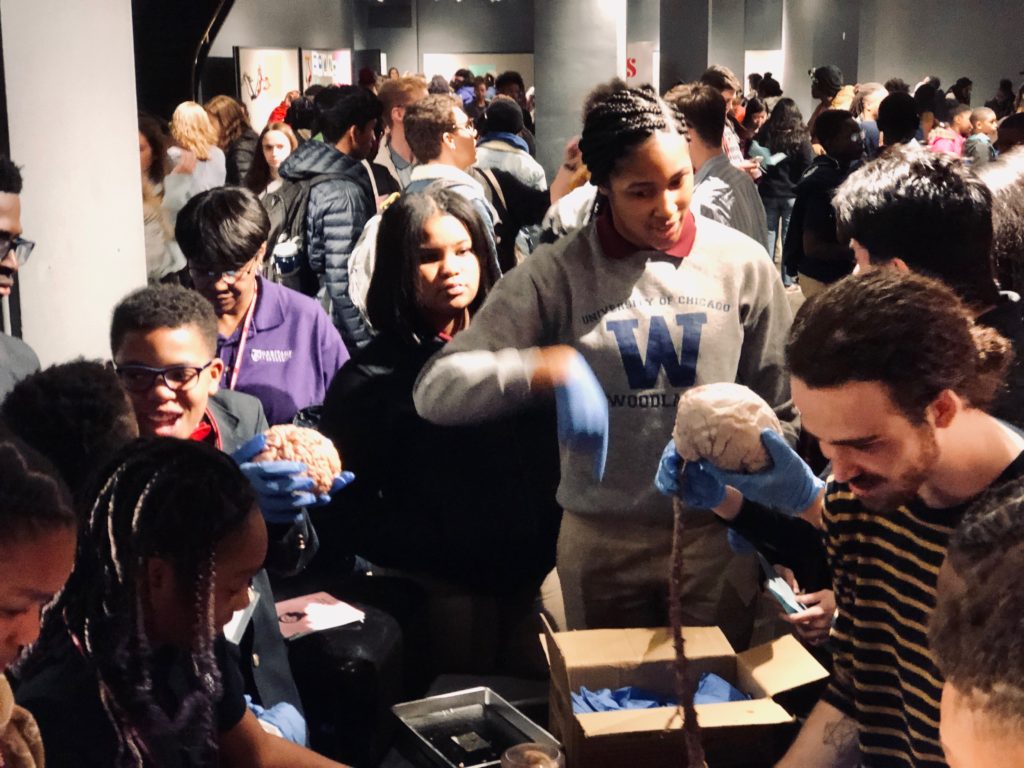
LEARN MORE: Loneliness Matters: A Theoretical and Empirical Review of Consequences and Mechanisms
LEARN MORE: Social isolation, loneliness in older people pose health risks
Attending the Society for Neuroscience 50th annual meeting was like walking through a candy store, everything from the endless poster sessions, the brain awareness campaign, the incredible biotechnology…it truly was amazing.
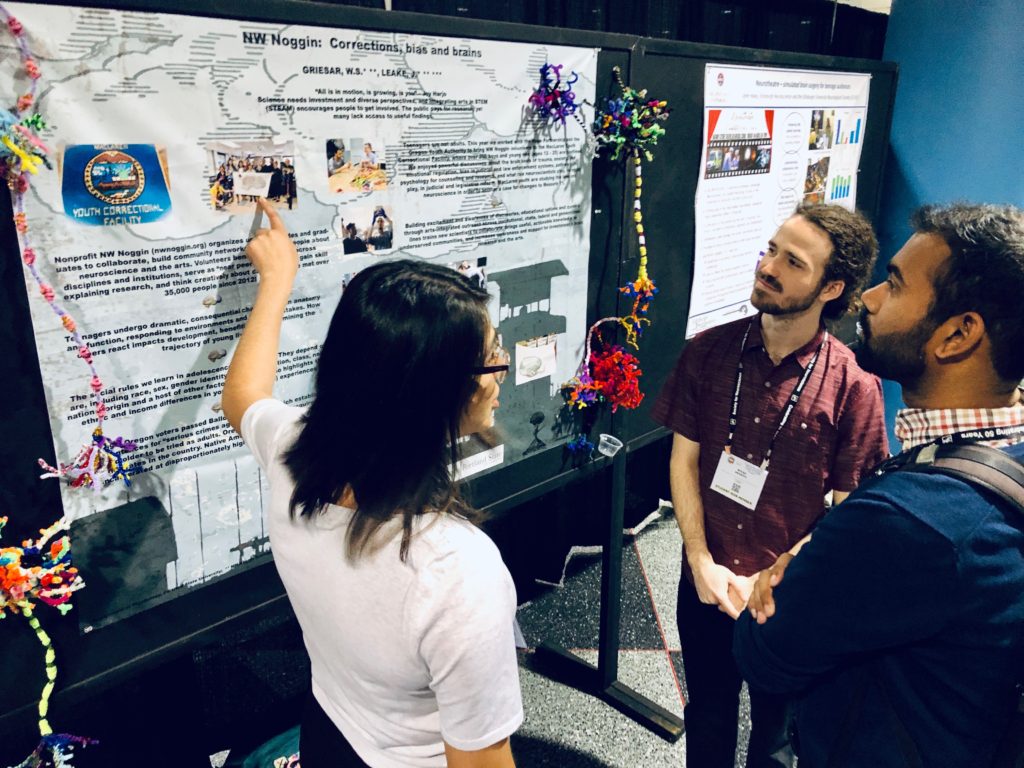
I urge anyone who has an interest in the brain and wants to learn about almost any topic they could imagine to attend a meeting such as this. I was able to search on the handy-dandy conference app for topics of interest and sit in on cutting edge research presentations, some which were right in line with the work I’m doing as part of the NIH BUILD EXITO program in Portland, Oregon.
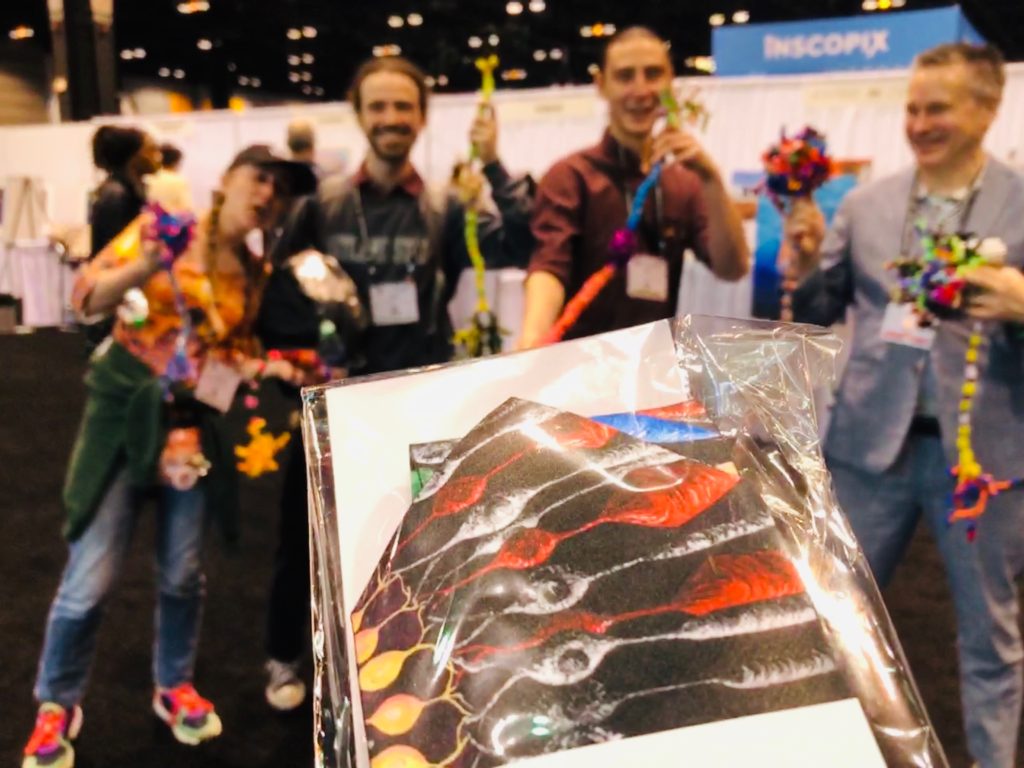
My favorite posters described how increased fiber in the diet of Alzheimer’s disease patients increased beneficial bacteria in the microbiome compared to controls, and how the drug ketamine can reduce reactive oxygen species in zebrafish, pointing toward its potential as an antioxidant.
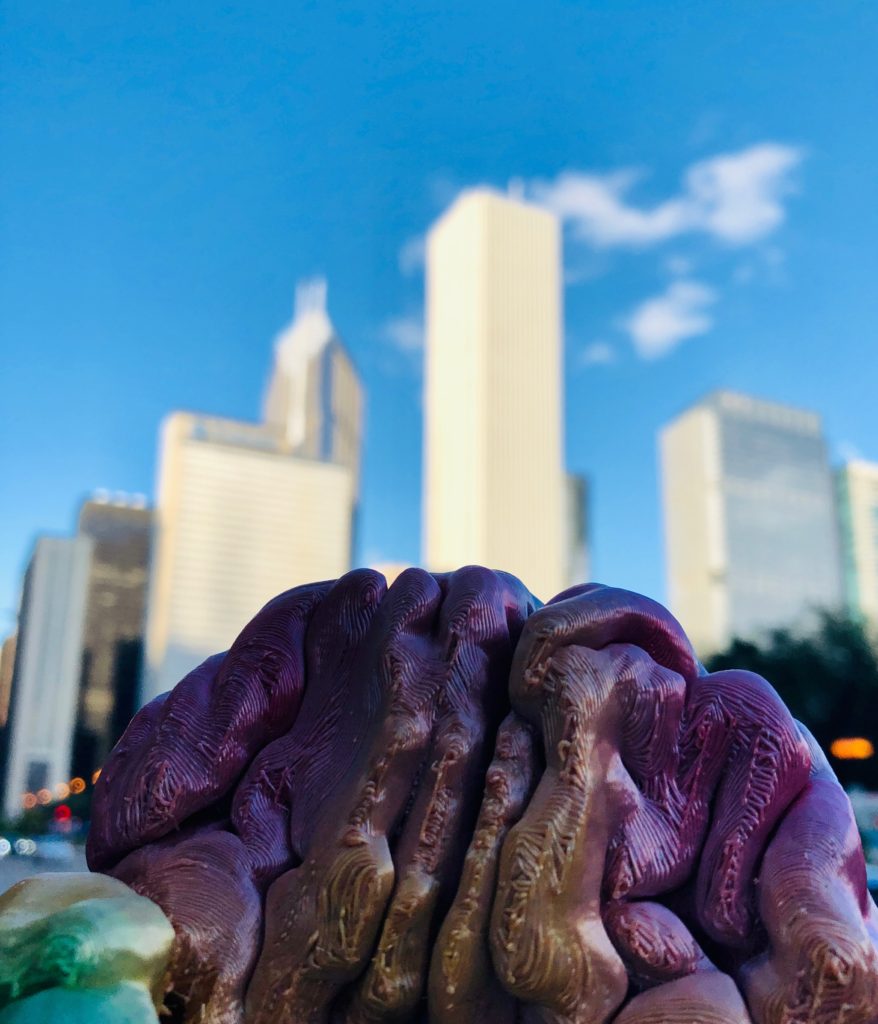
Again, I urge anyone who’s curious about doing something like this to come to outreach events and get involved! It’s been one of the greatest things I’ve done.
LEARN MORE: Antibiotics, gut microbiota, and Alzheimer’s disease
LEARN MORE: The Gut Microbiome and Brain Health
LEARN MORE: Ketamine-induced attenuation of reactive oxygen species in zebrafish is prevented by acetyl l-carnitine in vivo
Return to TopCam Howard, PSU/NW Noggin
This trip to the Society for Neuroscience annual meeting was my first visit to Chicago and also my first experience at a major neuroscience conference. It was amazing to see the beautiful architecture (outside of one particularly tacky-looking Trump Tower) that line the city streets, rich with history that doesn’t quite reflect our urban environments out West.
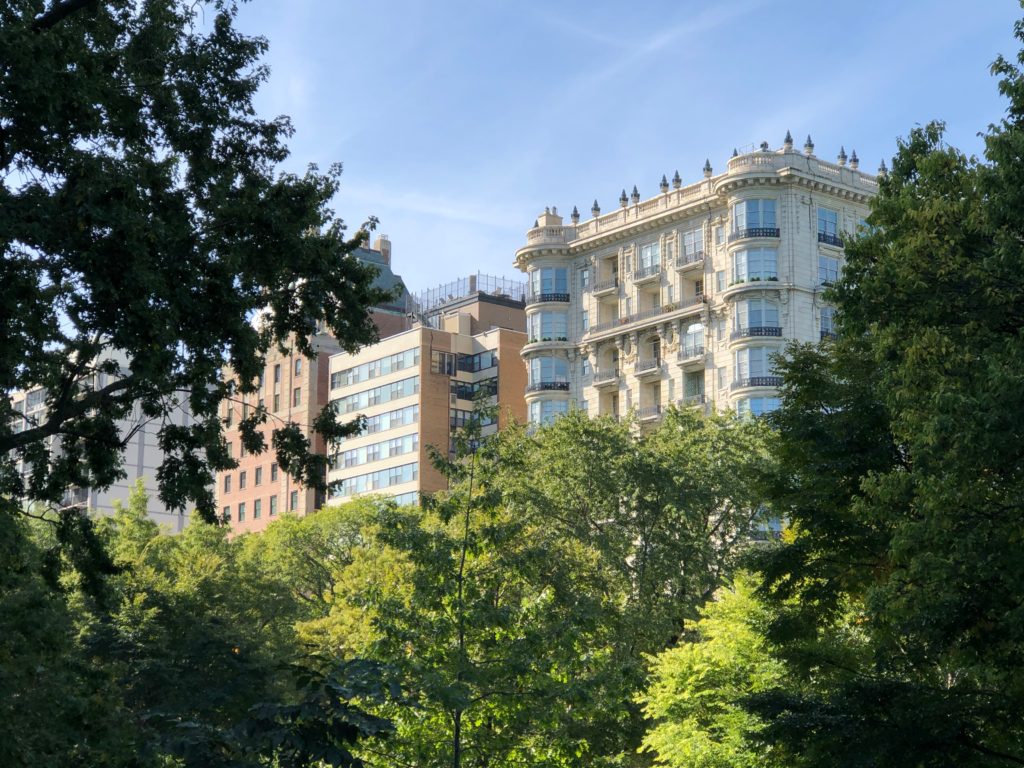
There were so many brilliant moments of fun, learning, and consideration on this trip. The outreach was especially full of these qualities. We focused on K-12, and met with about 500 curious and excited Chicago students in one afternoon!
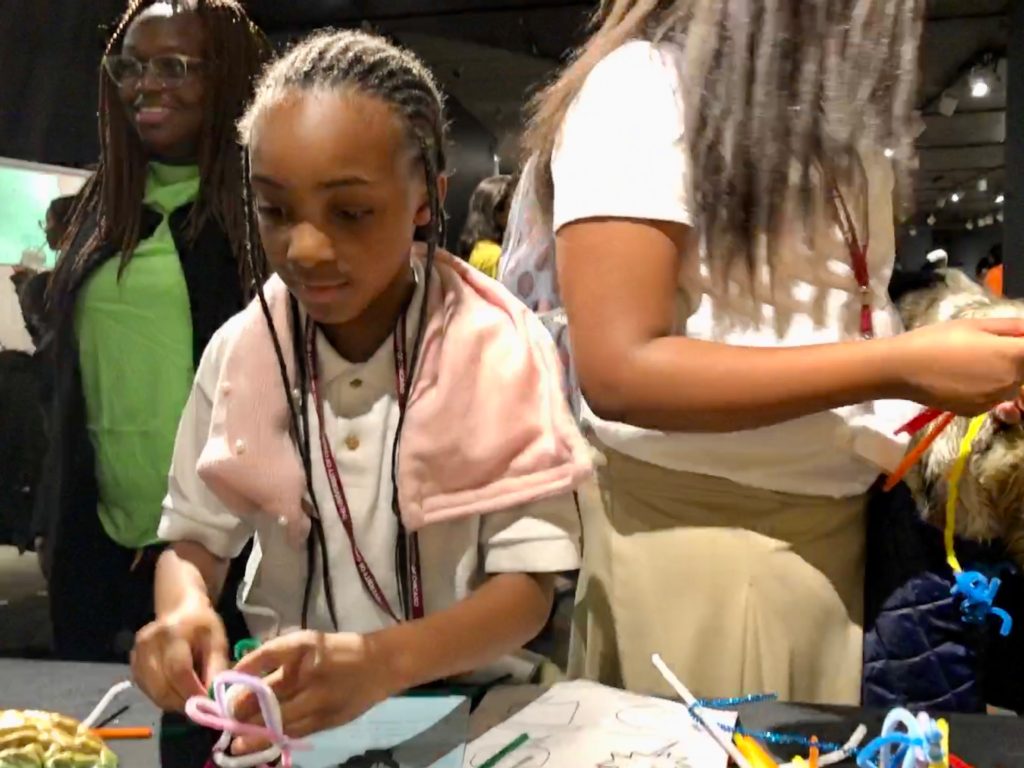
The art booth I led resulted in seemingly endless rows of unique, sculpted clay brains! Different interpretations made for distinctive representations, with cortical sulci and gyri swirling in large loops or smaller coils atop moderately sized clay bases. Occasionally there were much larger brains. We talked about different brain areas – for many of these emerging neural artists, the cerebellum and brain stem were decidedly optional!
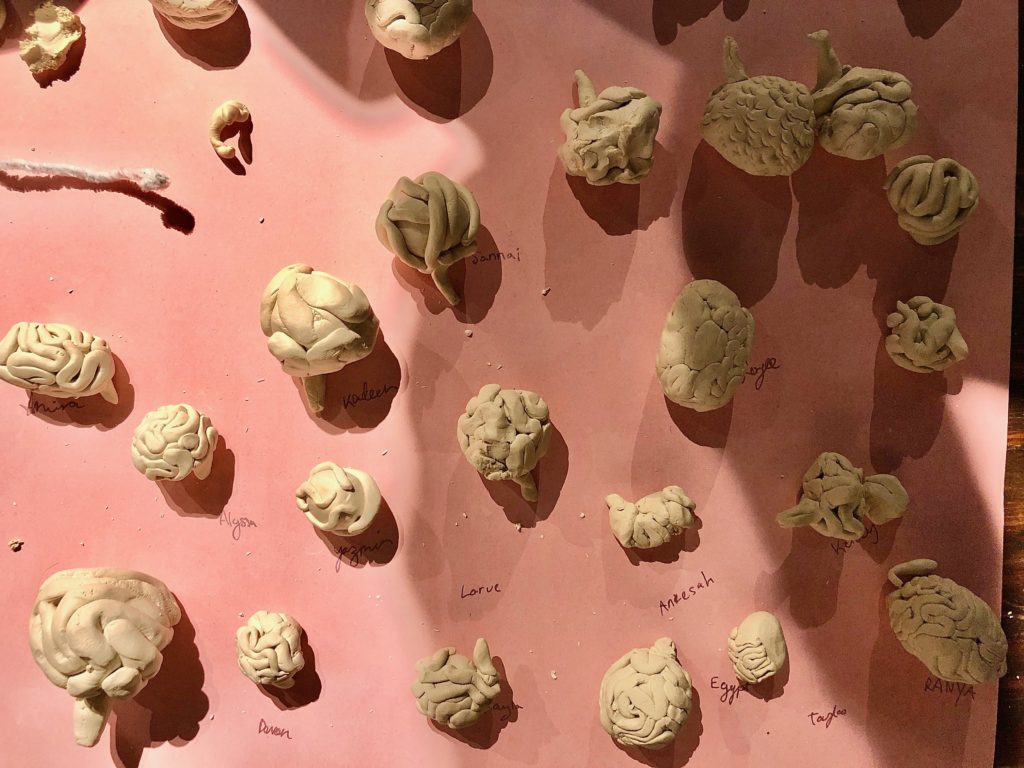
I had a ton of fun hearing what students already knew about neuroscience and answering their questions about brain structure and function. Getting to physically touch and mold little versions of their own brain definitely seemed to help cement (or clay?) these terms!
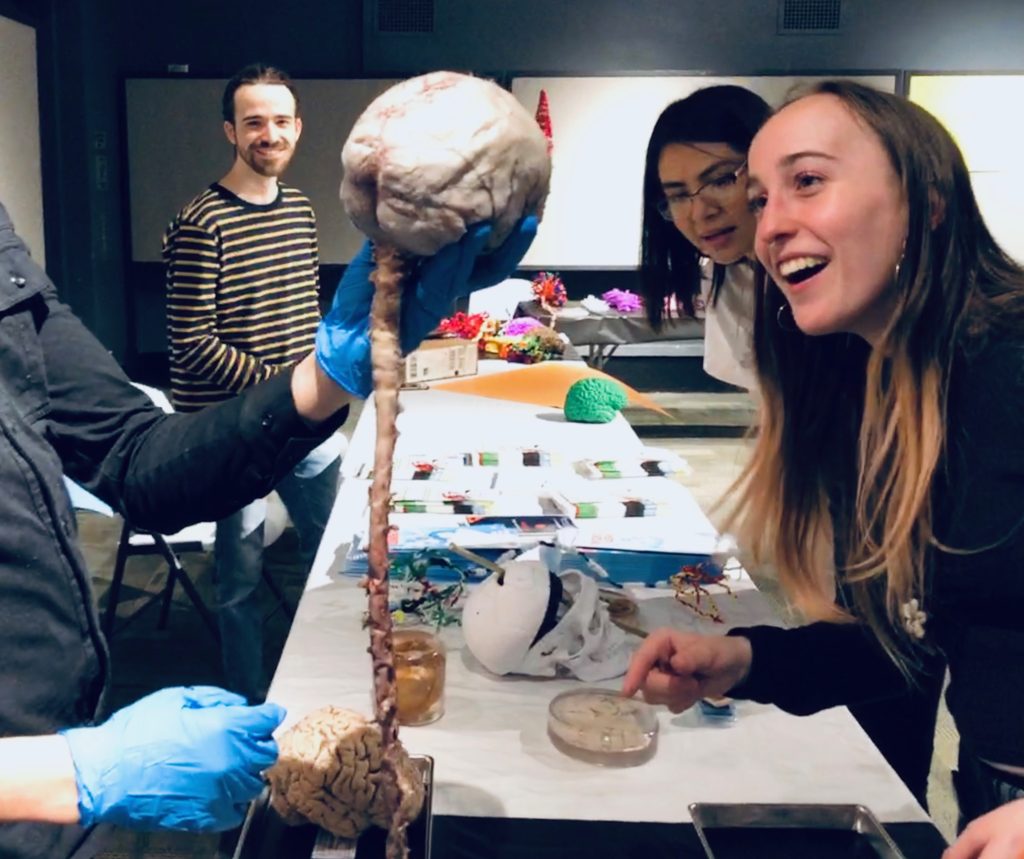
Our Monday school visit was canceled because Chicago public school teachers were on strike, fighting for living wages and smaller class sizes. Both are essential for successful public education.
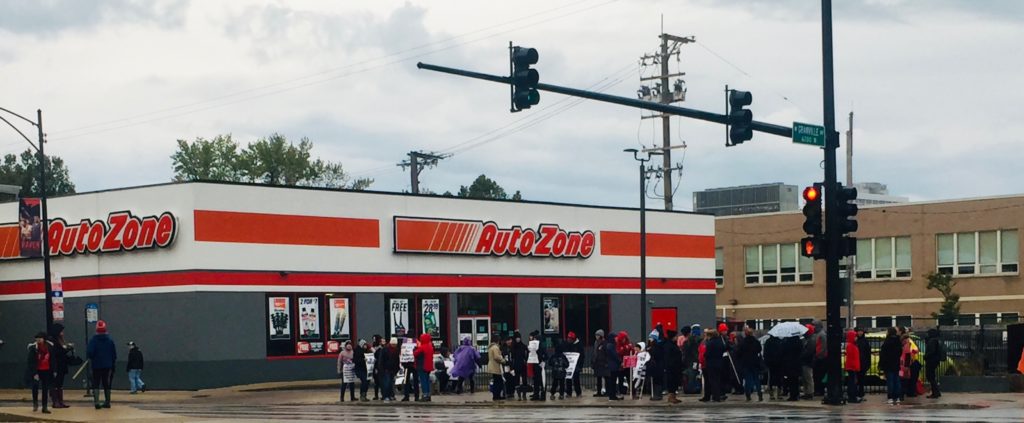
We offered our support, especially considering how much an equitable contract would benefit students who struggle in the classroom and give teachers the opportunity to better focus and help students succeed.
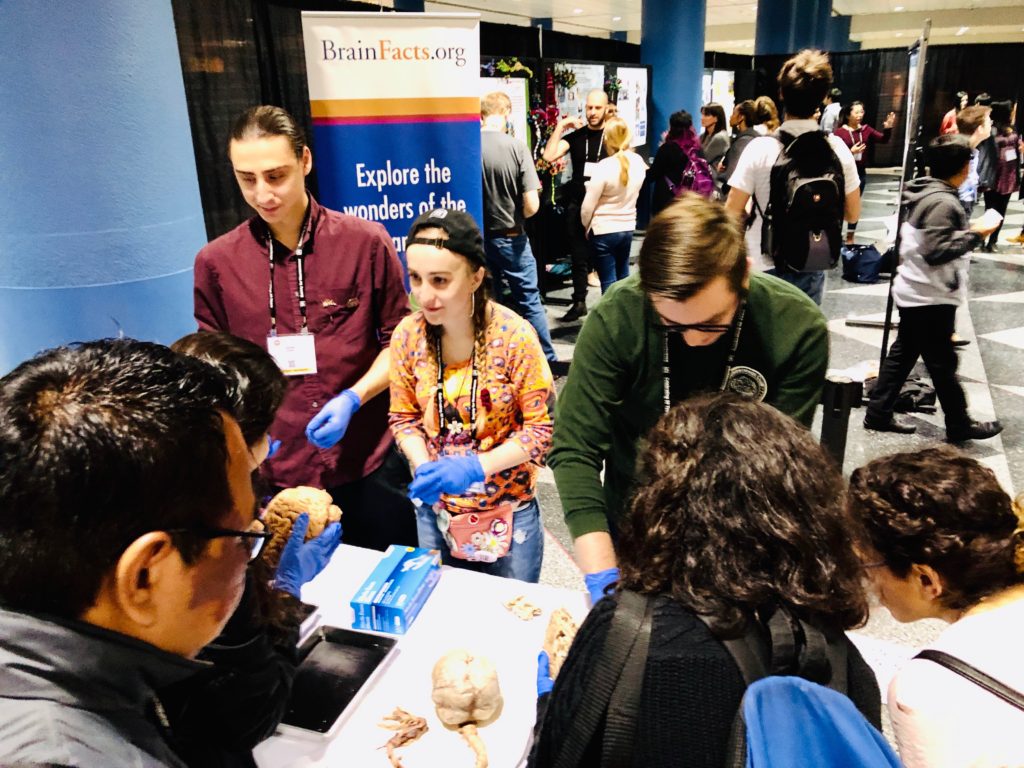
If we really want to ensure that no child is left behind, then we need to make sure that our teachers aren’t stressed from not making enough money to live on and that class sizes are small enough for those students who are more likely to fall behind to get the attention and help that they need.
LEARN MORE: Health and Economic Benefits of Reducing the Number of Students per Classroom in US Primary Schools
LEARN MORE: The Tennessee study of class size in the early school grades
LEARN MORE: Inequality in Teaching and Schooling: How Opportunity Is Rationed to Students of Color in America
Despite missing one outreach visit, we did get to enjoy an additional two; one at Chicago’s International Museum of Surgical Science and another at the actual Society for Neuroscience conference, during our Brain Awareness poster presentation itself!
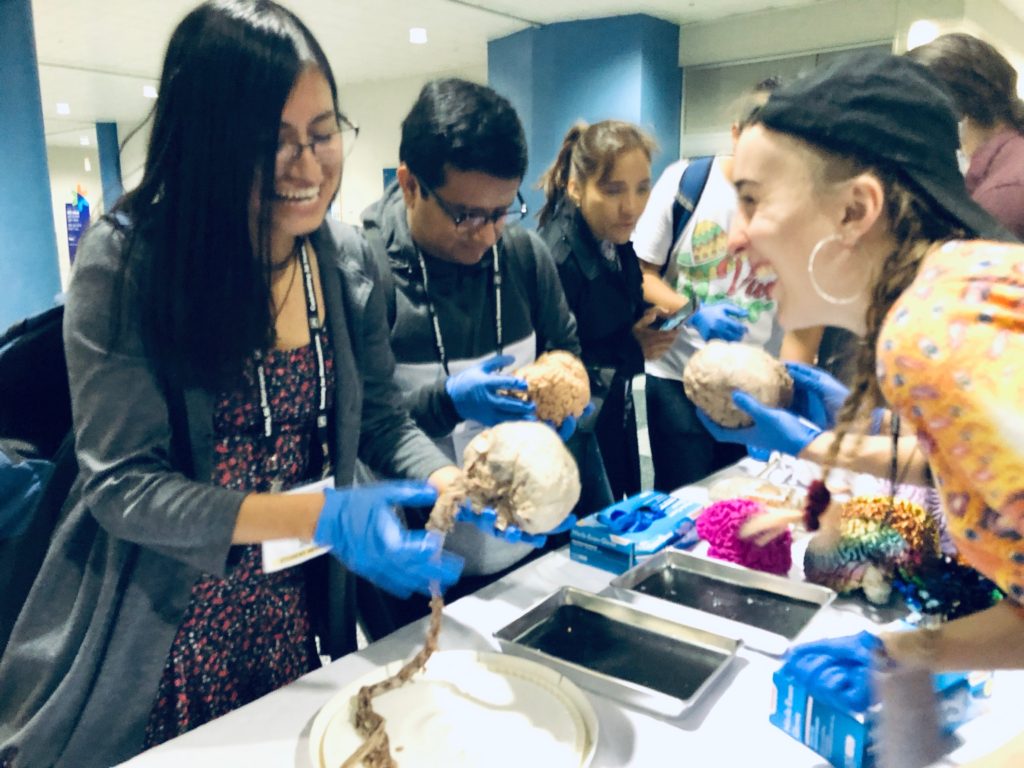
It was an absolute blast to see K-12 students and museum visitors get so excited about brains – and neuroscientists too!
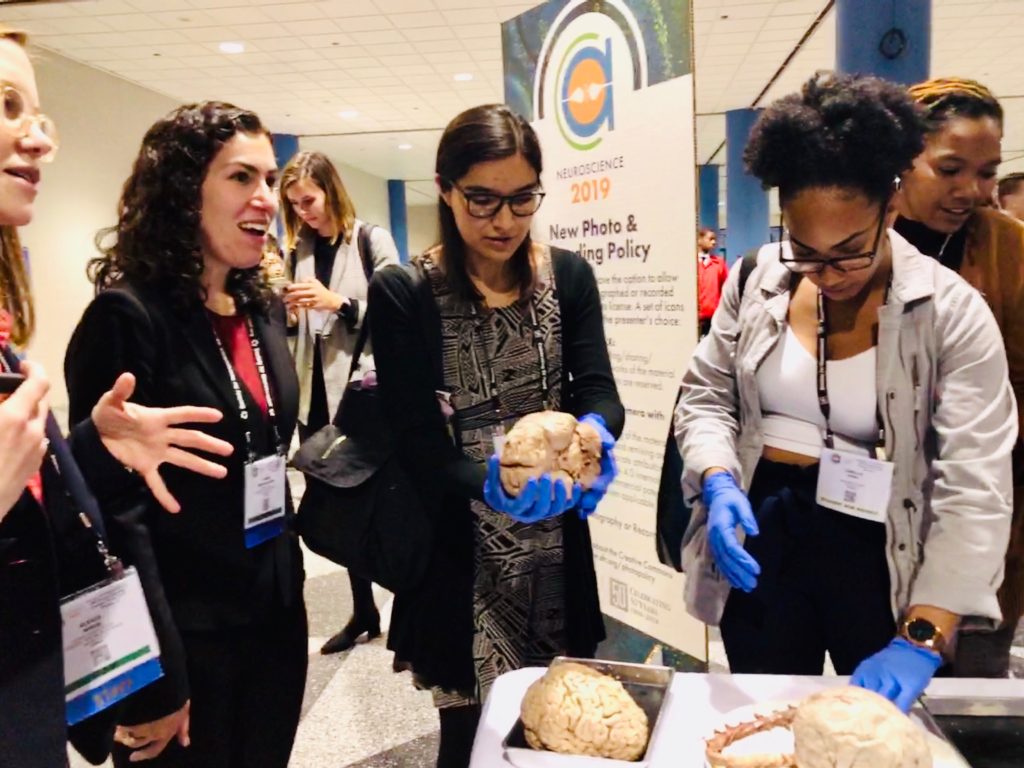
Both were so intrigued by brains and had so many questions, proving that no matter your level of expertise, a real life brain still provokes a sort of childlike wonder and curiosity and fascination in us all!
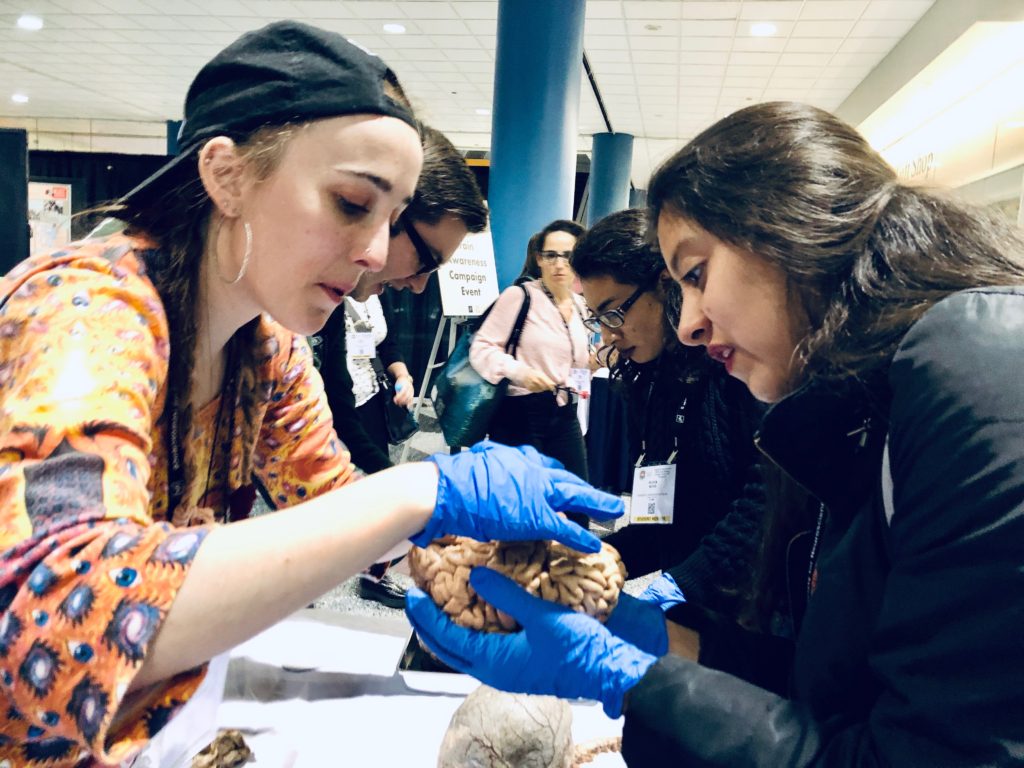
Maria Galvan-Bravo, PSU
One of my favorite parts from visiting Chicago with NW Noggin was the Social Neuroscience Fair! There were so many kids and it was very exciting to see how engaged they were in all of the activities..!
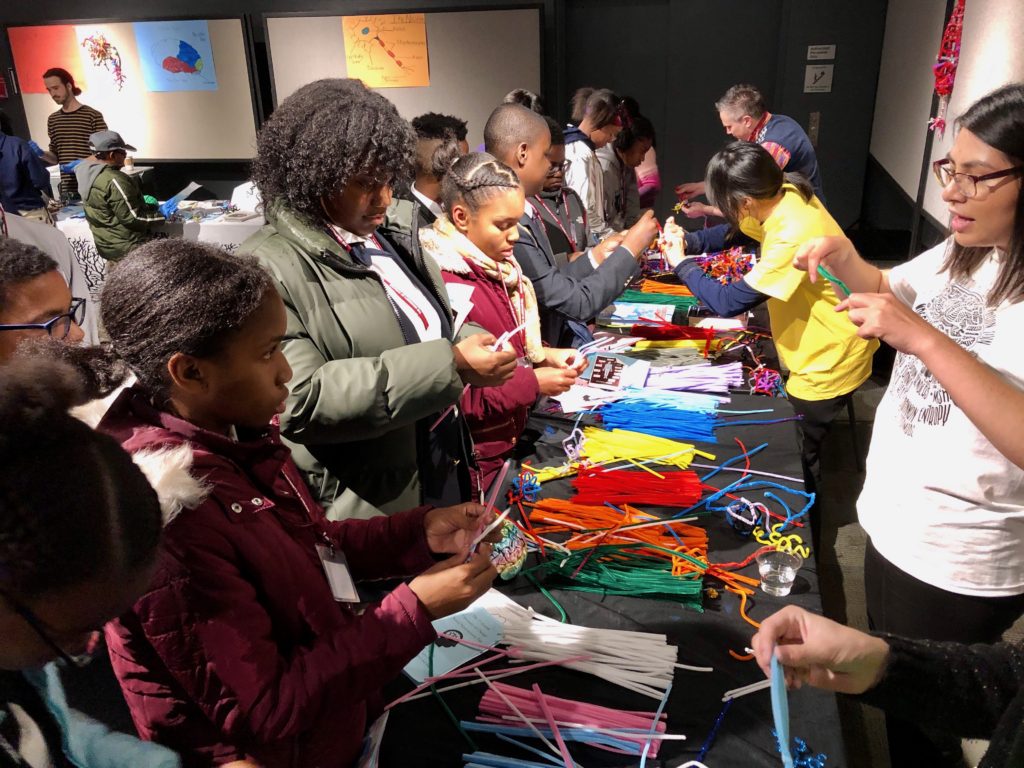
I was in charge of helping kids build a neuron out of pipe cleaners. I loved being able to share my knowledge with them, as much as enjoyed learning what the children already knew! Many came up and shared with excitement that they knew what a neuron was and what it did.
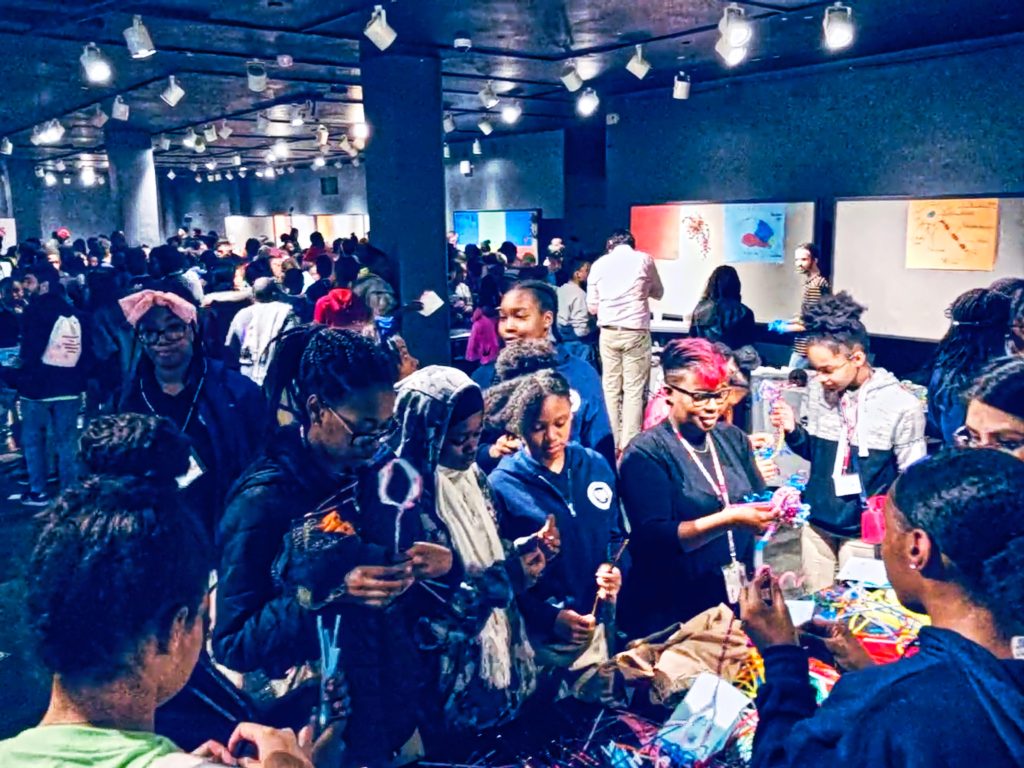
I could tell their fascination hearing them speak, and when they asked more questions.
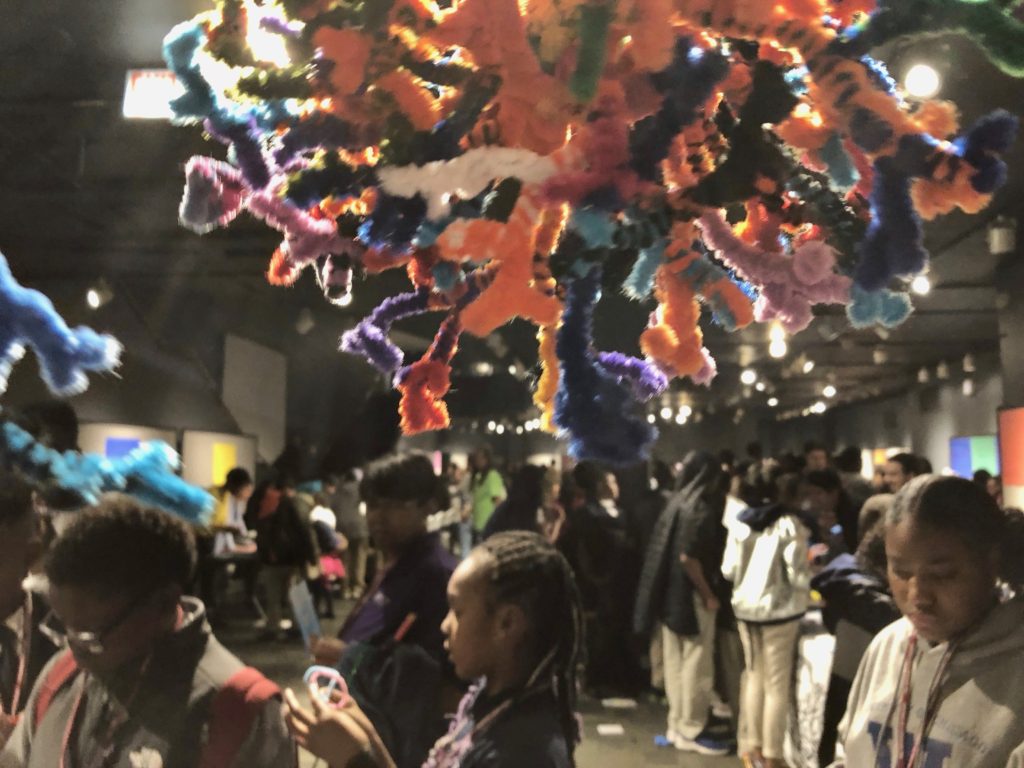
LEARN MORE: Make Your Own Pipe Cleaner Neuron
The International Museum of Surgical Science was a lot of fun too, especially learning about what people used to do in the past. I am glad that medicine has advanced and thankful for what we know now!
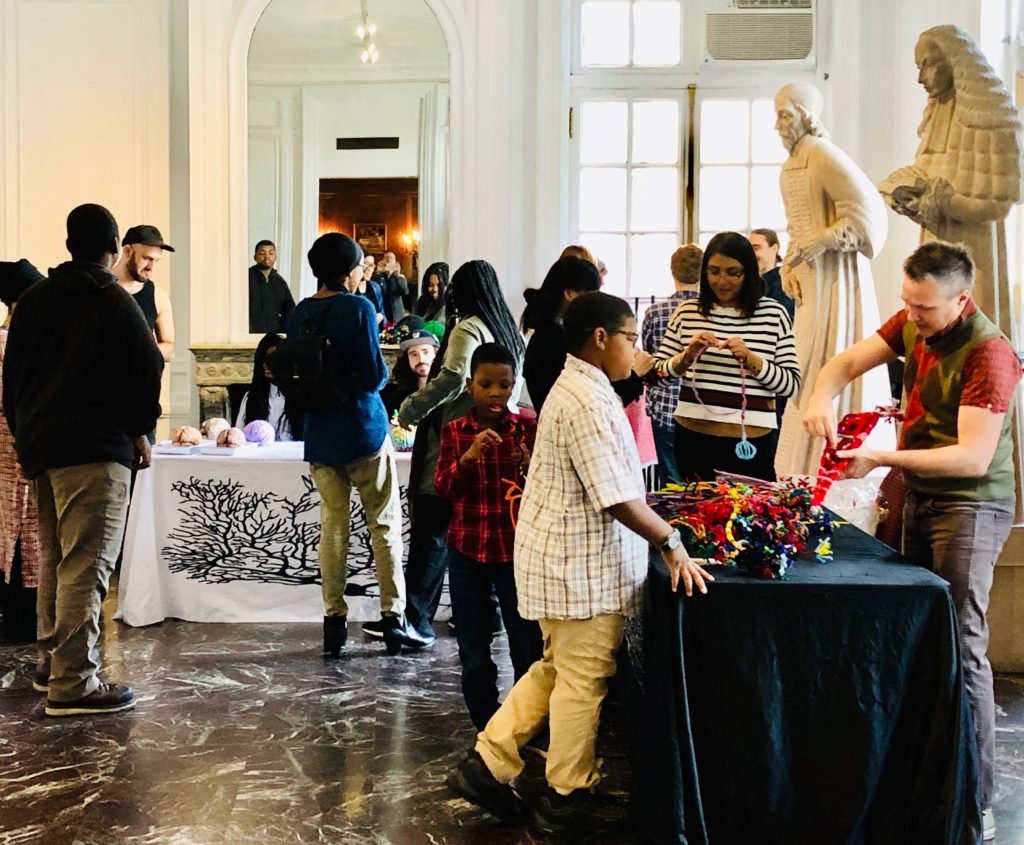
LEARN MORE: The evolution of surgical training: perspectives on educational models from the past to the future
LEARN MORE: A history of surgery: From superstition to science
I still can’t believe it was the FIRST time the Society for Neuroscience had real-life brains (well, extra ones in trays!). HOOOWW?!- what is neuroscience without seeing a real brain? I am very happy that we were able to bring specimens to SfN!
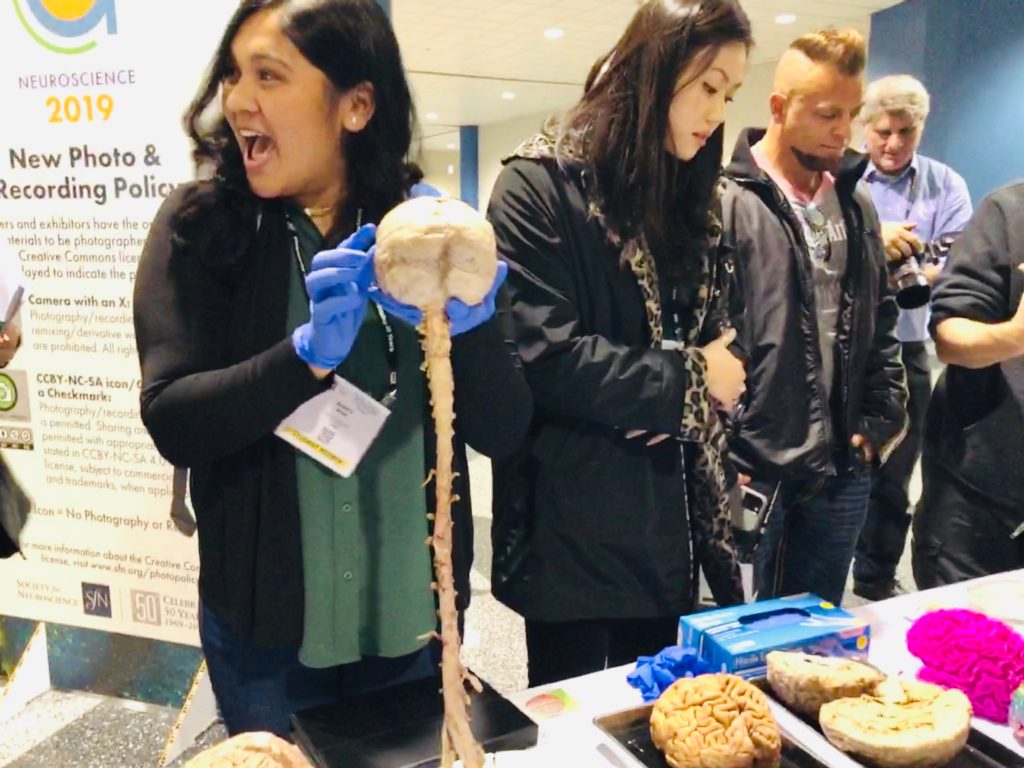
Something I found fascinating was a talk by Dr. Fei-Fei Li, a professor of computer science and the co-director of the Stanford University Human-Centered AI Institute (HAI) on how robots are being built to perform tasks that are too dangerous or almost impossible for humans.
It is always easier to rebuild a robot. She also talked about how we need to be working with robots, and NOT be replaced by robots. I completely agreed with her on this. Businesses are so concentrated on replacing any job with robots, but that can bring many challenges of its own.
LEARN MORE: Meet Fei-Fei Li, the recipient of the National Geographic Further Award
Return to TopAaron Eisen, NUNM/NW Noggin
Going to Chicago to attend the largest brain conference in the world and meeting almost 500 students in the city was an amazing experience. On our first day we traveled to the Chicago Museum of Science and Industry for the Society for Social Neuroscience’s first ever Social Neuroscience Fair. The students brought with them a sense of wonderment, curiosity, and enthusiasm that radiated throughout the room.

They enjoyed a host of different activities including Noggin art projects, virtual reality simulations, holding real brains, and using electrophysiology equipment to control reflexes in each other’s arms. The room was filled with smiles, laughter, and excitement from all the students.
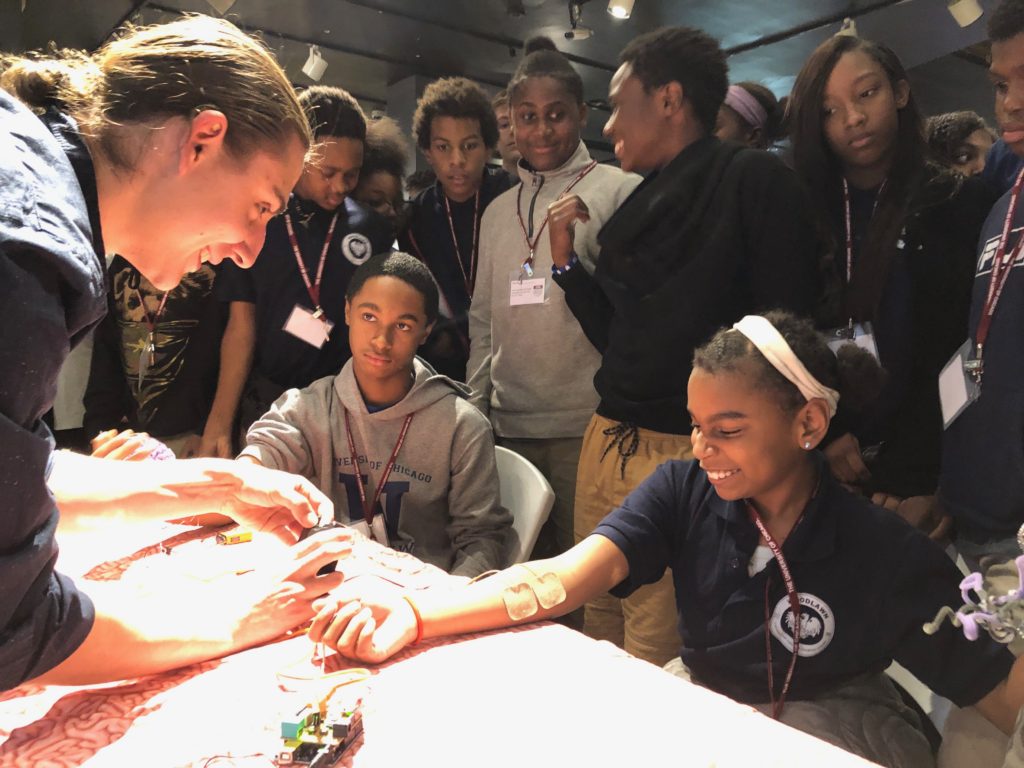
On our second day in Chicago, we traveled to the International Museum of Surgical Science and had wonderful and in-depth conversations about neuroscience research with museum attendees.
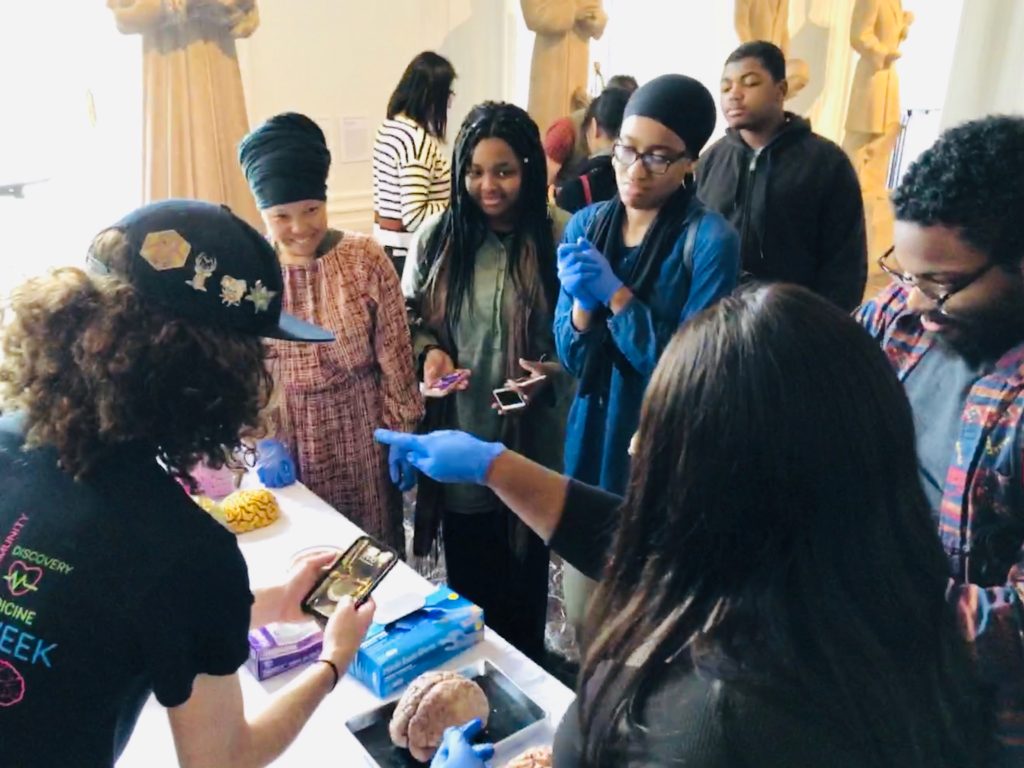
We had the opportunity to tour the museum and even to participate in a mock amputation on my former Portland State teacher and NW Noggin Art Coordinator Jeff Leake! I was actually the surgeon who “removed” his leg.
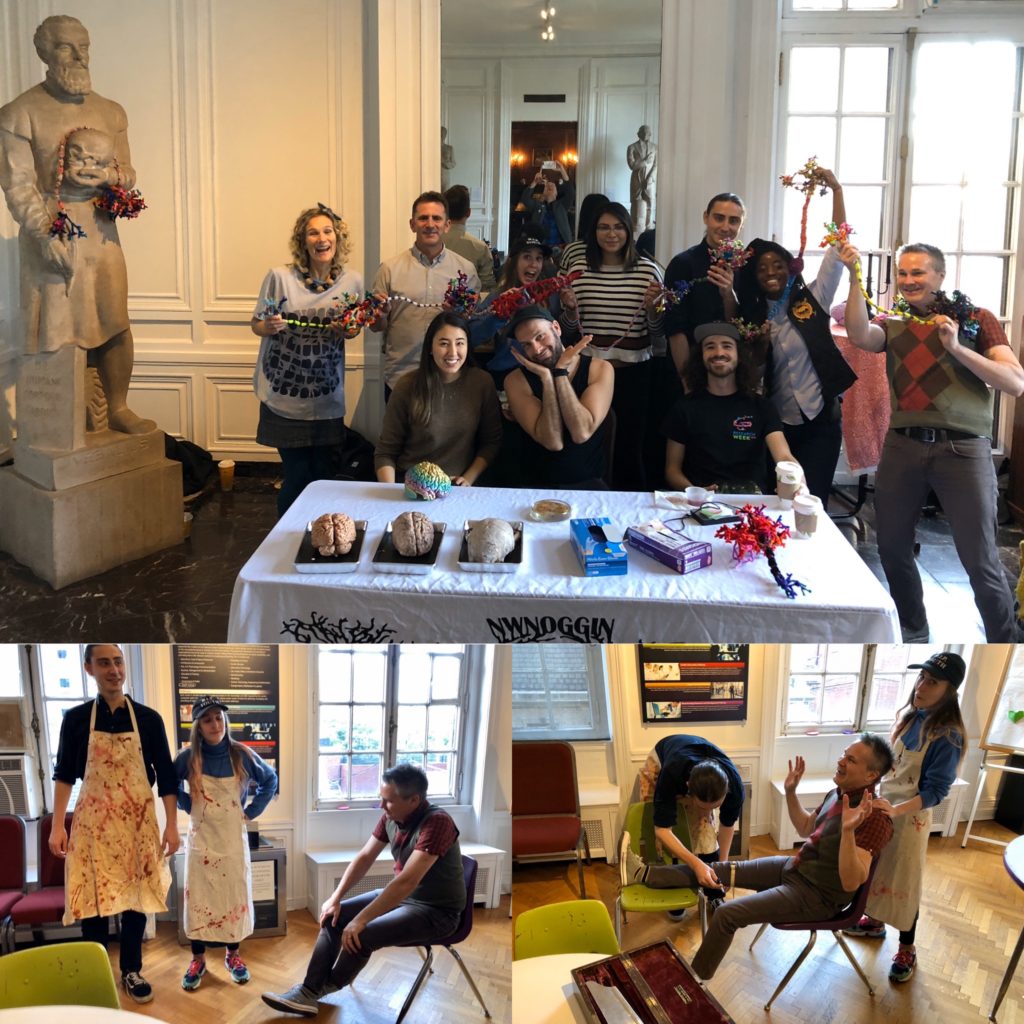
After two days spent exploring wonderful museums of Chicago, we set off to the Society for Neuroscience’s annual conference to present our posters and brains, make new connections, and learn about new research in the field.
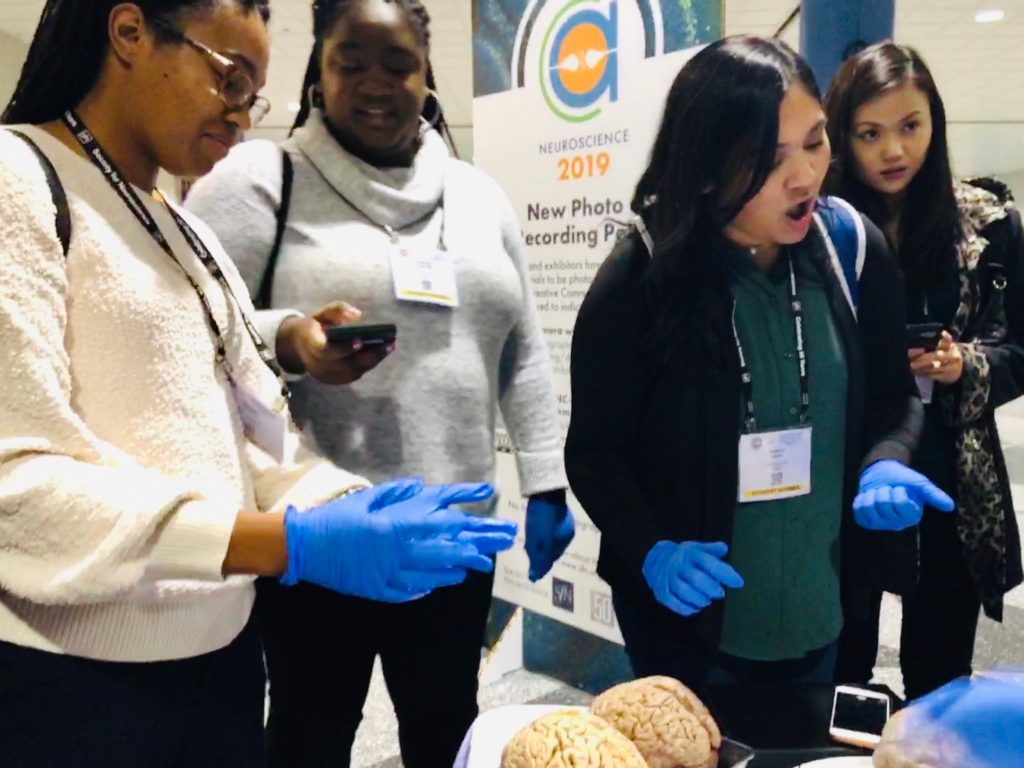
On our first day of the conference, we presented real brains to conference attendees at the Brain Awareness Campaign Event and discussed ideas for outreach opportunities in their local areas. We also presented a poster at the event which highlighted a host of different outreach events that NW Noggin volunteers developed over the past year.
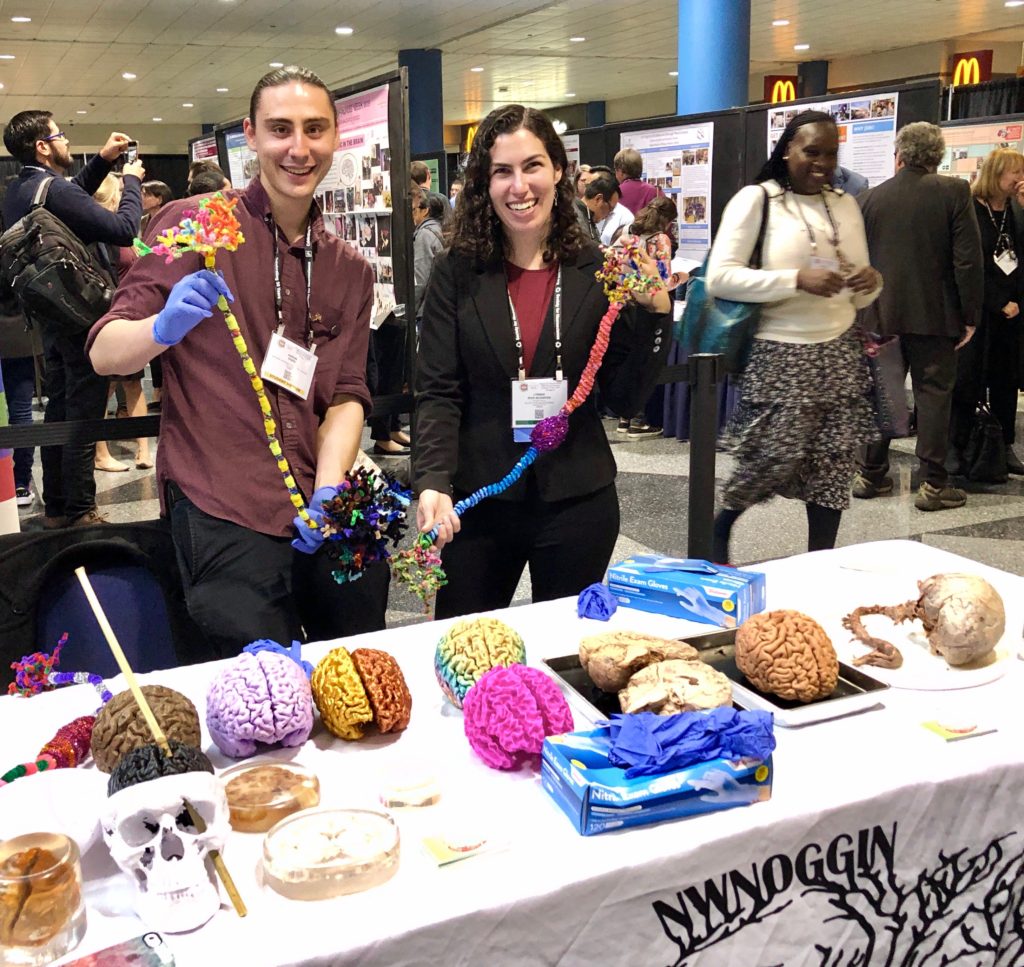
On the second day of the conference, we presented another poster on the amazing range of student questions that we’ve considered during outreach events.
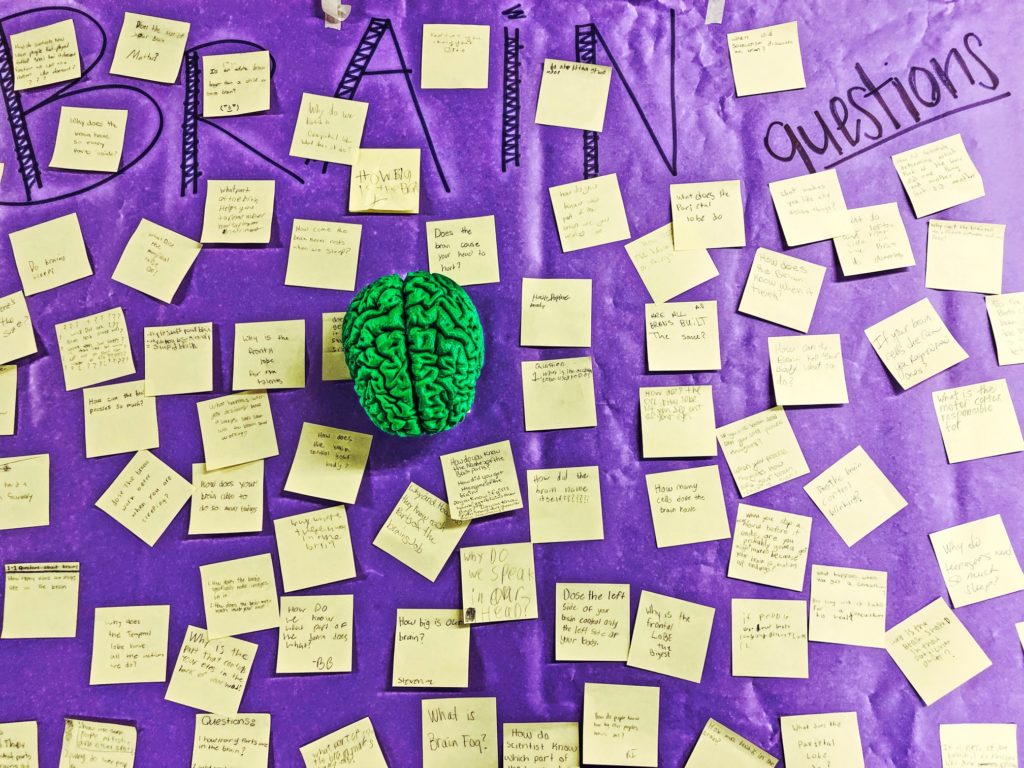
LEARN MORE: How can you change your brain?
One of my favorite questions was from a middle school student in Grants Pass, Oregon, who asked, “If someone is born deaf, what language do they think in?” I was amazed that a conference attendee seemed to know the answer; she stated that people who are born deaf often visualize the hand signs in their thoughts when thinking. The questions sparked the interest of many conference attendees who engaged in wonderful conversations about their desire to host outreach events in their own communities.

LEARN MORE: When deaf signers read English: Do written words activate their sign translations?
Throughout the rest of the conference, we explored a plethora of various posters, lectures, and vendors who presented a glimpse into state-of-the-art developments in the field of neuroscience. I spent an ample amount of time at the Backyard Brains booth where I discussed novel ideas for outreach events and technologies. Through these conversations, I found that it may be possible to modify the popular human-human interface so that one student could control several students.
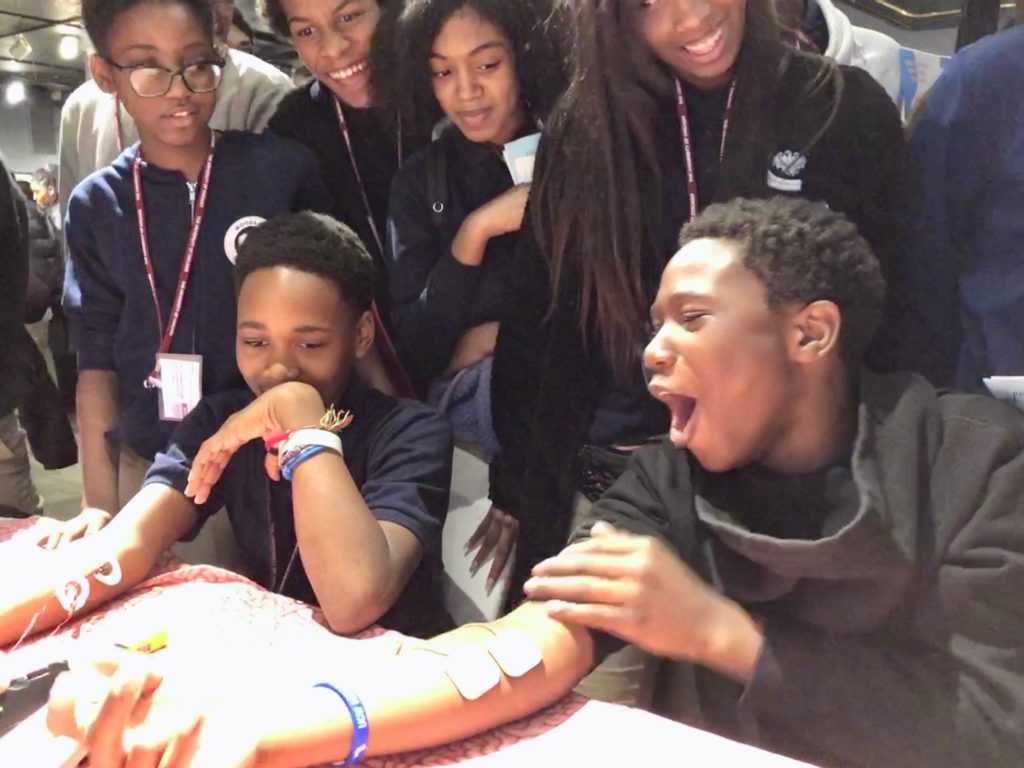
I also purchased a kit to build a new prosthetic hand that could be controlled by the Human-Human Interface device.
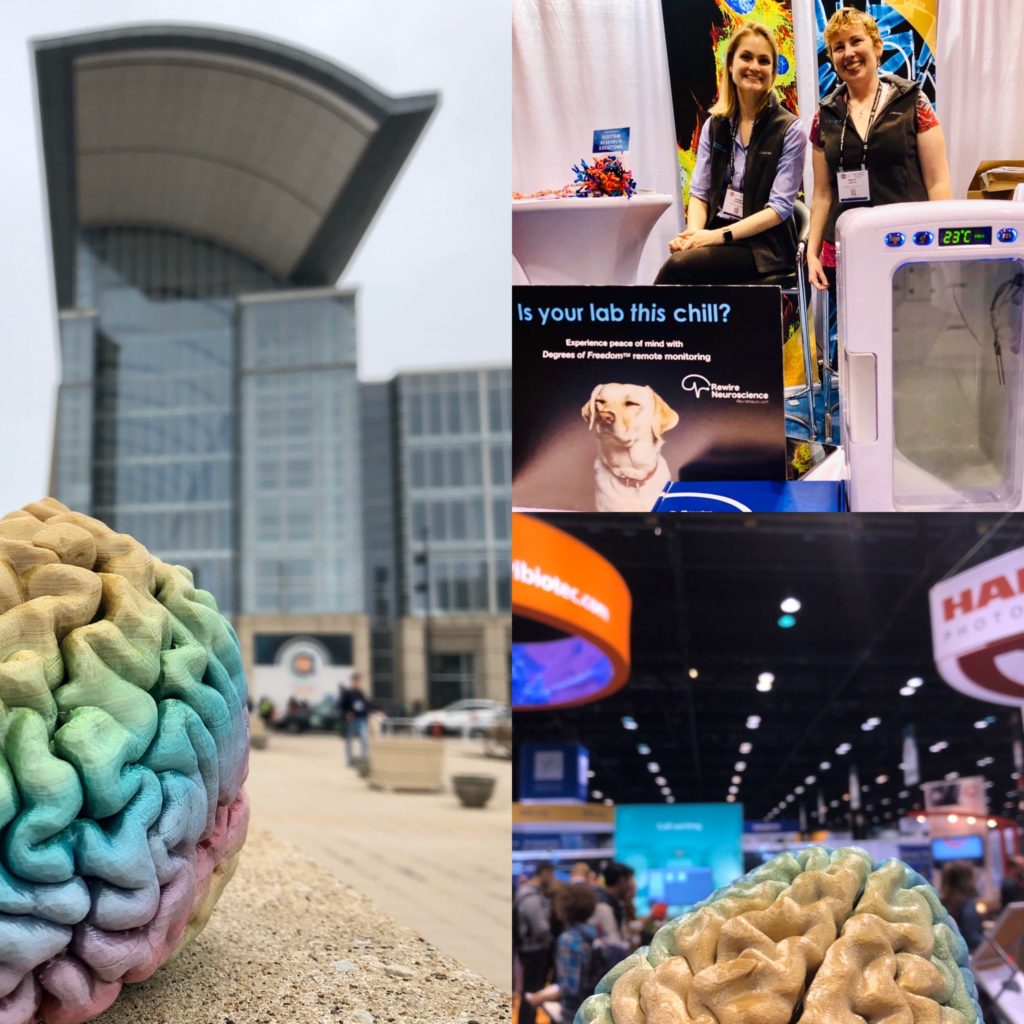
We visited posters on how substances such as psychedelics, cocaine, and alcohol affect the brain. I was surprised to learn that the brains of adults who used cocaine for several decades can dramatically recover after a few years of abstinence. We also saw an amazing lecture on neuro-ethics which discussed the ethics behind new innovations in the field of neuroscience. For example, companies in China have started monitoring the brain activity of their workers using mobile EEG devices. Would you agree to work for a company that requires data on your brain’s activity while you work?
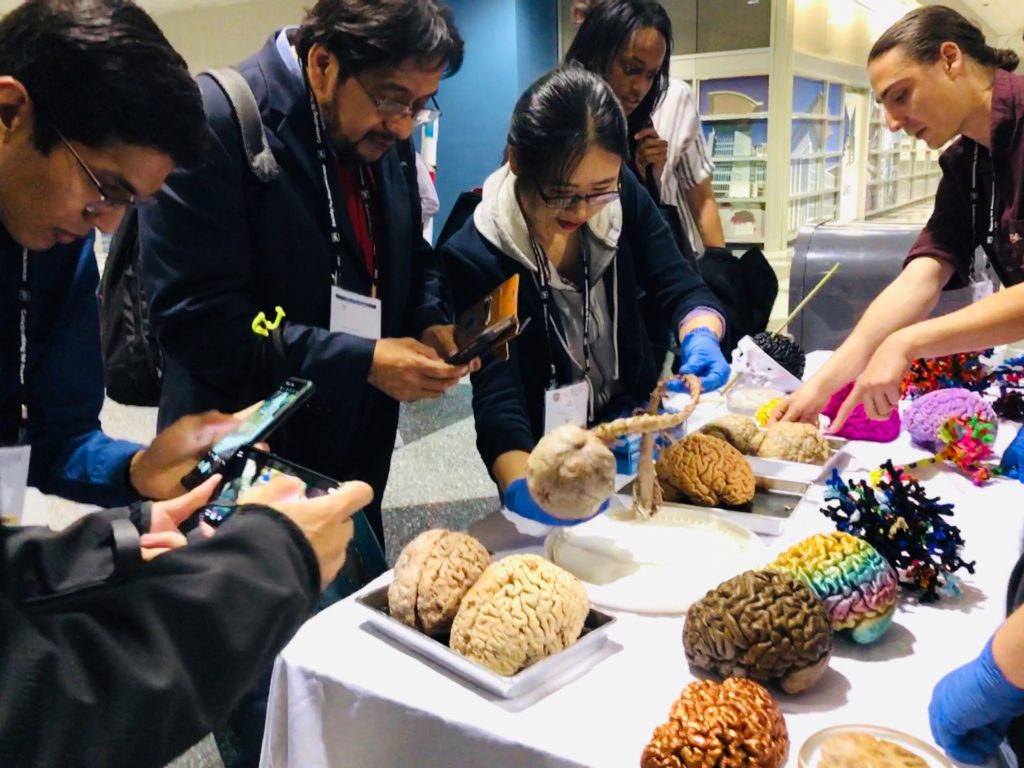
LEARN MORE: Advances in understanding addiction treatment and recovery
LEARN MORE: Recovering from Cocaine: Insights from Clinical and Preclinical Investigations
LEARN MORE: Automatic Change Detection for Real-Time Monitoring of EEG Signals
In summary, our trip to Chicago was an amazing experience full of enthusiasm, excitement, and wonder. I am greatly looking forward to the next Society for Neuroscience Conference in Washington, D.C.
Return to TopSai Kiersarsky, PSU
There were so many incredible experiences I had the honor of participating in during the Society for Social Neuroscience and Society for Neuroscience conferences in Chicago that it’s hard to distill it into a brief summary!
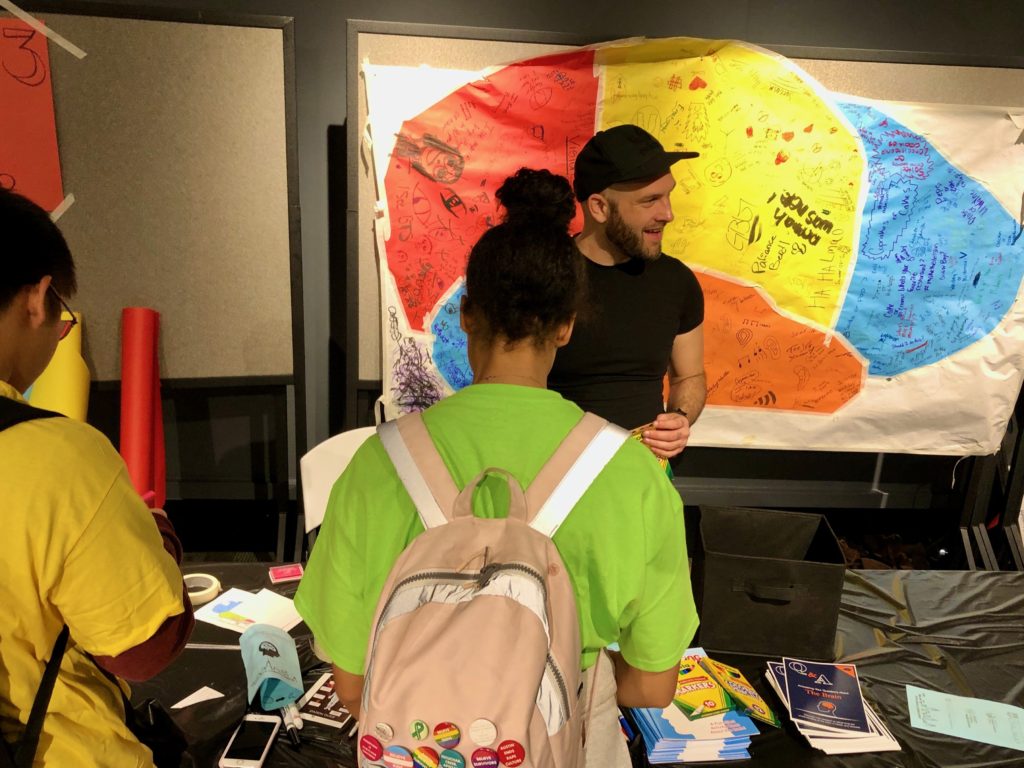
But first off, there was the unique opportunity to talk with many kids from Chicago schools about brains and brain research, and work with them on interactive neuroscience art projects!
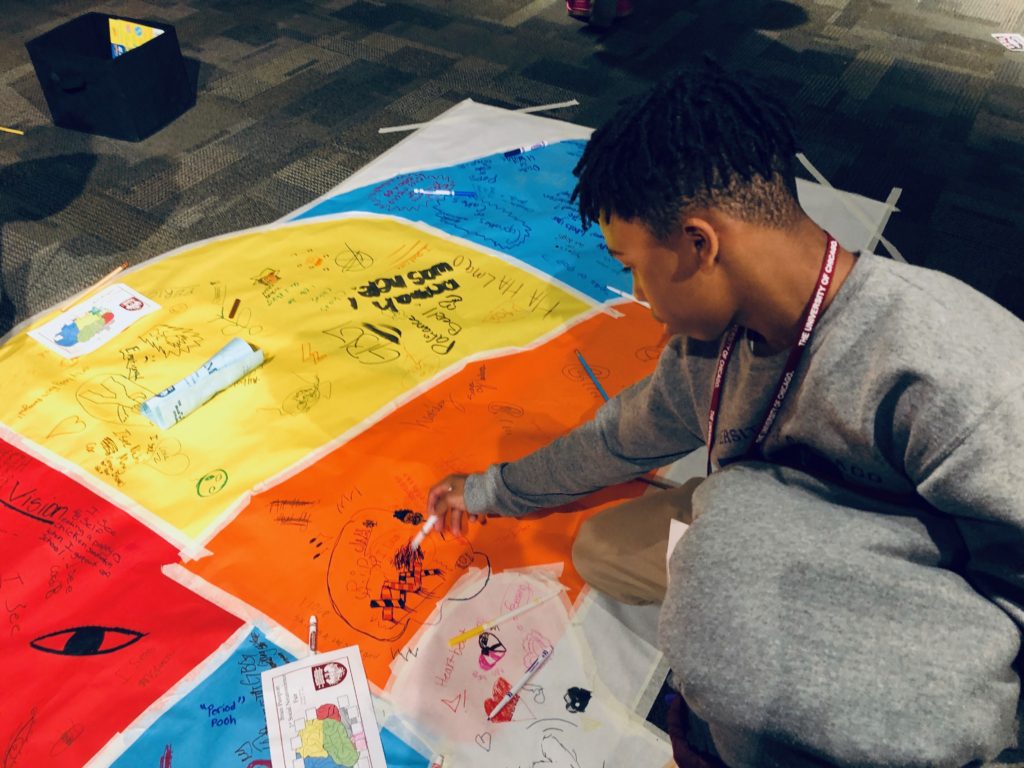
LEARN MORE: NW Noggin STEAM Art Projects
We were making everything from clay models of brains, trying a unique printing process that uses intricate natural objects to mimic brain cells, and creating huge brain maps where kids drew their interpretations of what various brain regions do.
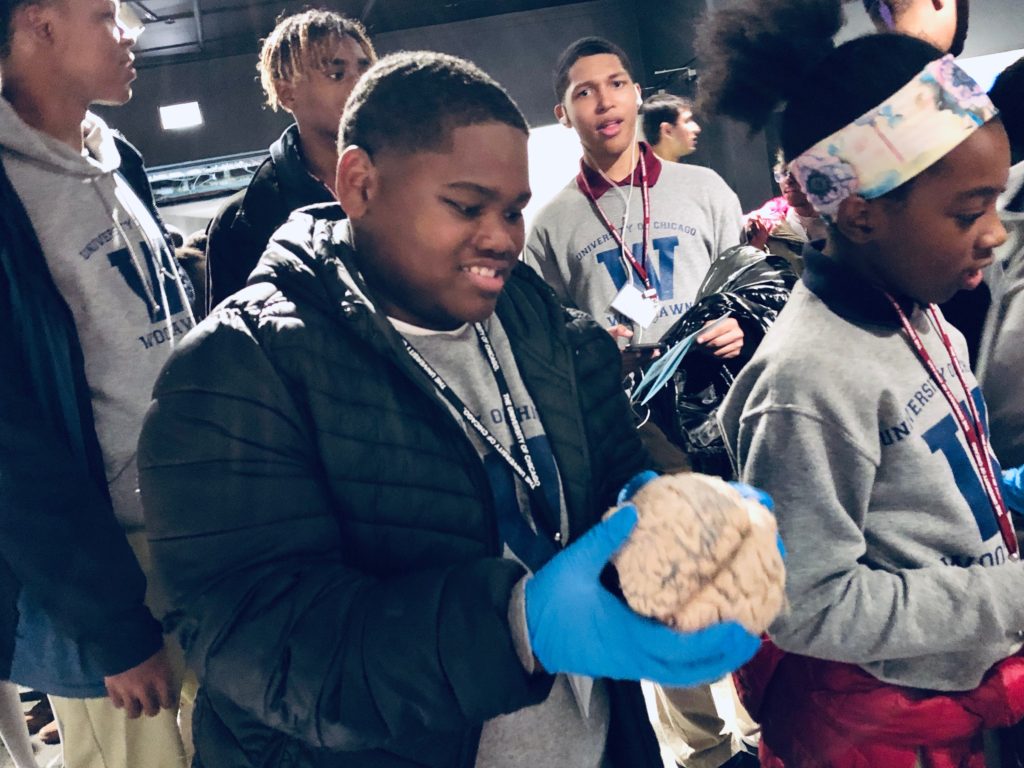
And of course, we had real brains that kids could touch and hold, including one which still had the spinal cord attached! We were able to bring these brains to International Museum of Surgical Science, in which we talked with curious museum goers about neuroscience!
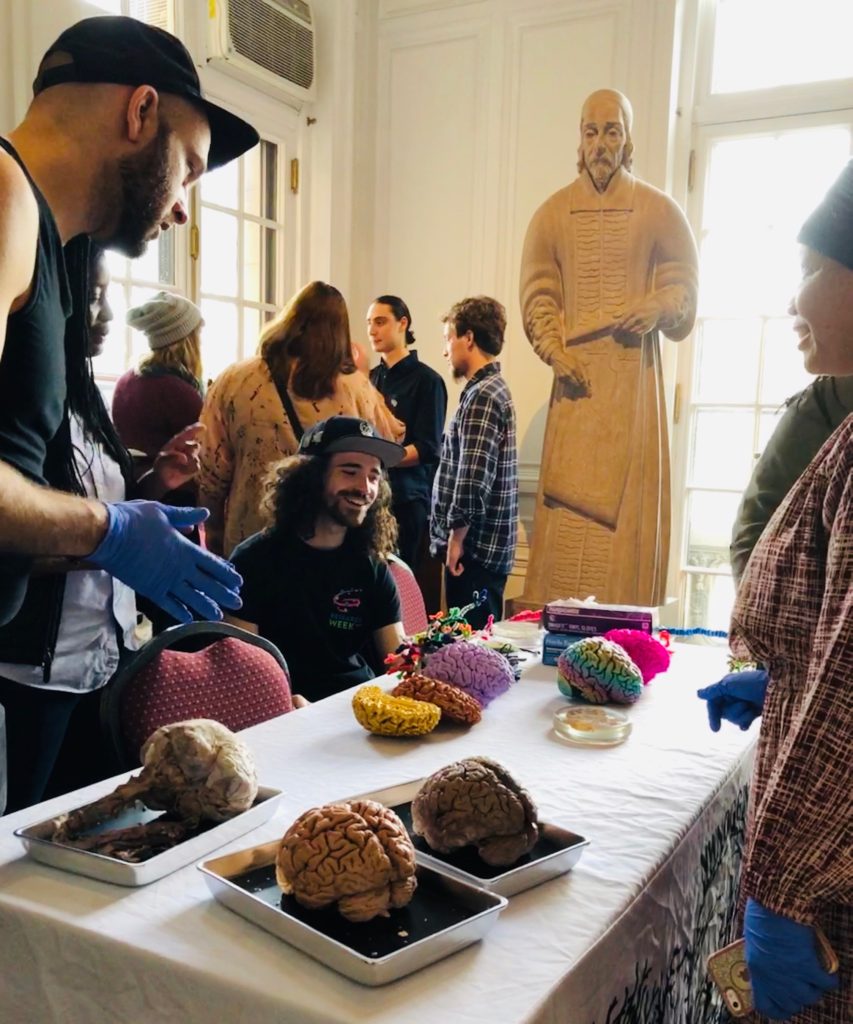
The Society for Neuroscience conference itself was one of the most fascinating and inspiring experiences I’ve ever had.
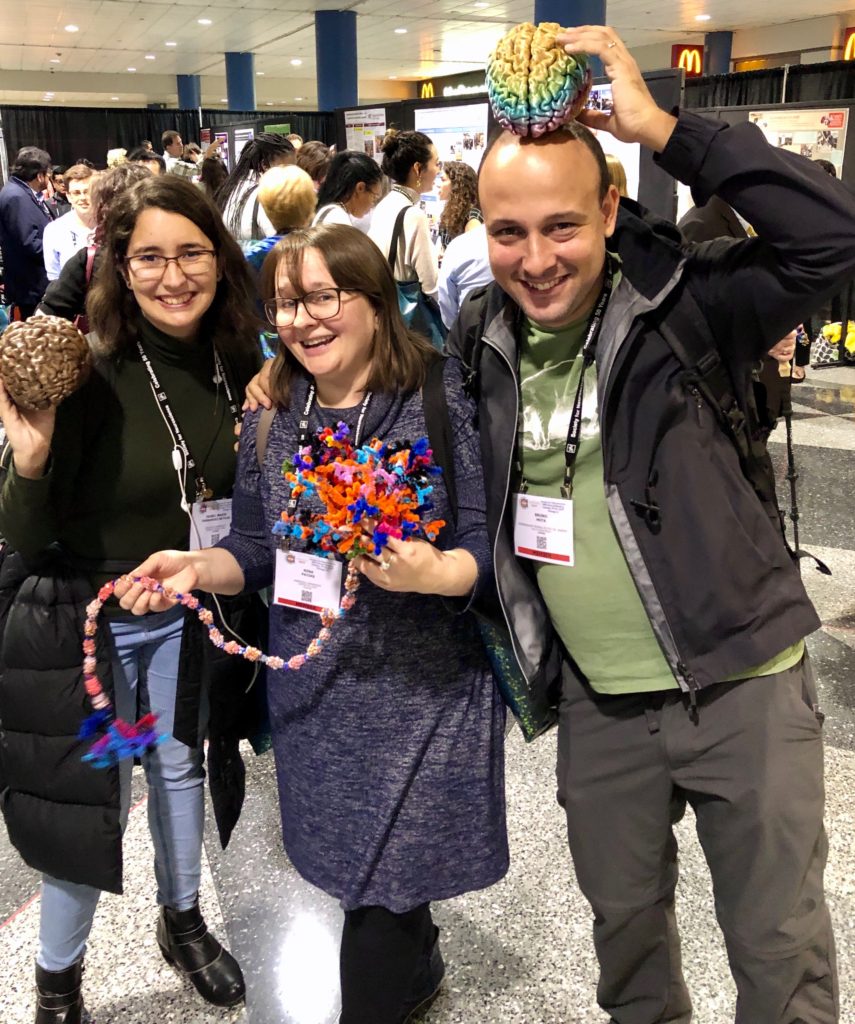
Over 25,000 neuroscientists from all over the world gathered in Chicago to present their cutting edge work, much of which hasn’t even been published yet! More researchers would have attended if the current United States government weren’t so unwelcoming, racist and xenophobic.
LEARN MORE: U.S. Travel Ban Disrupts The World’s Largest Brain Science Meeting
LEARN MORE: Xenophobia Run Amok at the National Institutes of Health
LEARN MORE: The Republican Party Is Aggressively Repositioning Itself as the Party of Trump’s Racism
LEARN MORE: Most Americans have rejected Trump’s xenophobia
LEARN MORE: SfN on Science Knows No Borders
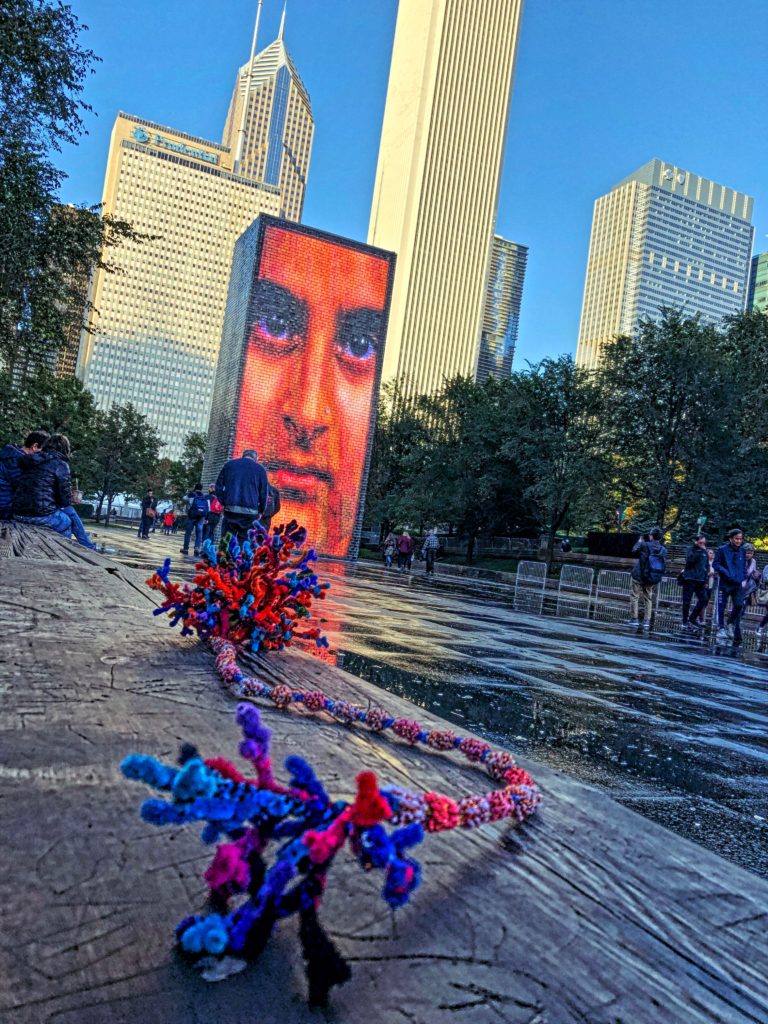
Nevertheless, many brilliant scientists presented their collaborative, international work in several formats. Some stood next to posters (like me!) demonstrating their research and talked to whomever was interested, some gave formal presentations to groups ranging from twenty people to over a thousand, and some contributed to fascinating panel discussions on specific topics. At any given time, there were many, many, many things happening at once – so it was impossible to see it all.
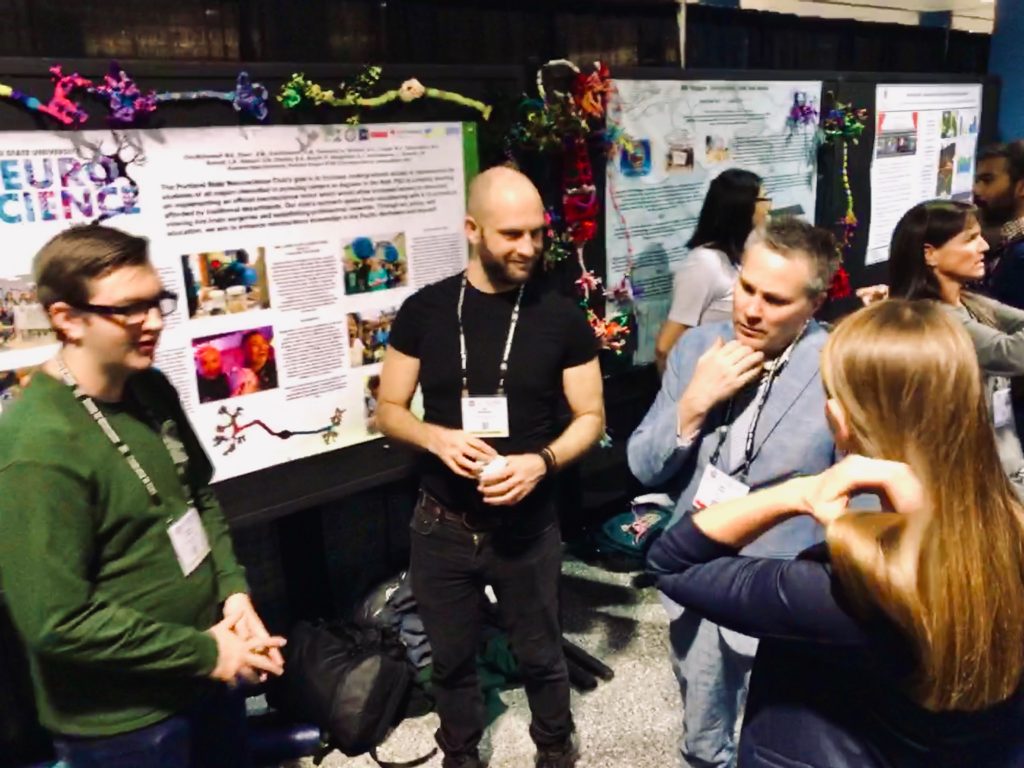
I encountered some of my favorite topics at SfN, including neuroethics, neuroscience outreach, brain-computer-interfaces (BCIs), the relationship between machine learning and neuroscience, methods in which humans and other animals gain information and build mental models about the world, and consciousness.
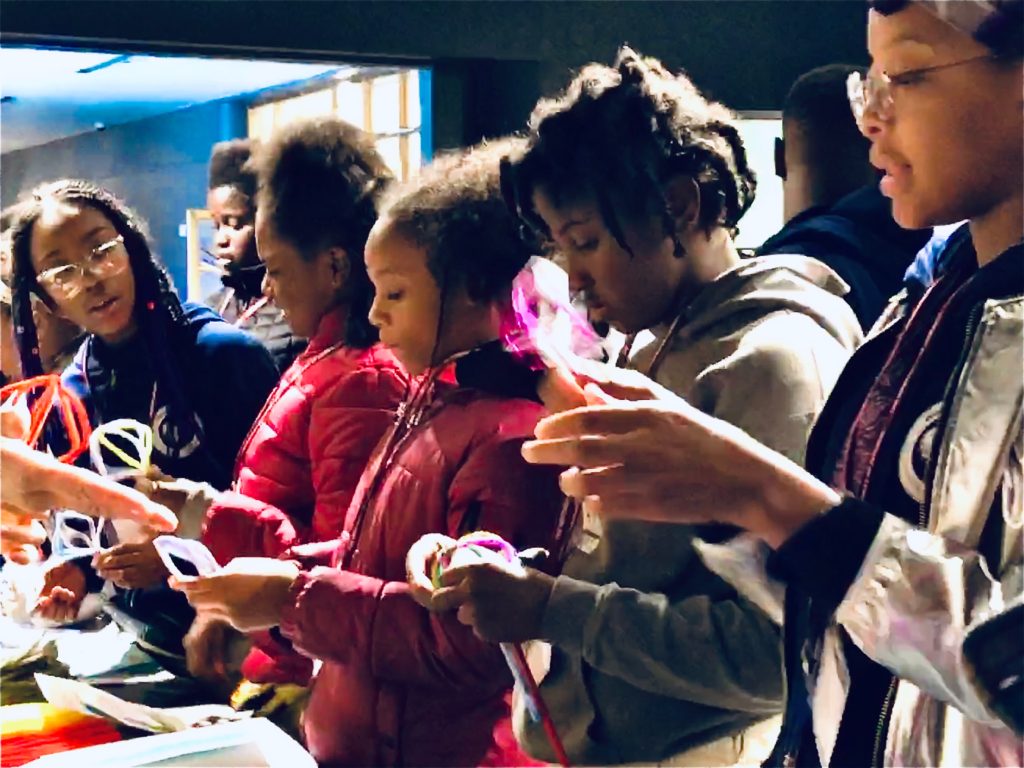
Overall, I think the biggest benefit for me was being able to talk with brilliant neuroscientists face to face, which is something that can’t be done from a library or computer. And of course, sharing all of these experiences with our group has created some of my favorite memories I’ve ever made.
Return to TopThanks to the Society for Social Neuroscience, the Society for Neuroscience, the Portland Alcohol Research Center at OHSU, and Portland State University for supporting the future of neuroscience education, outreach and research!


